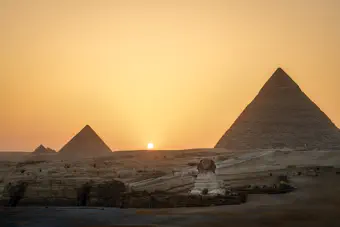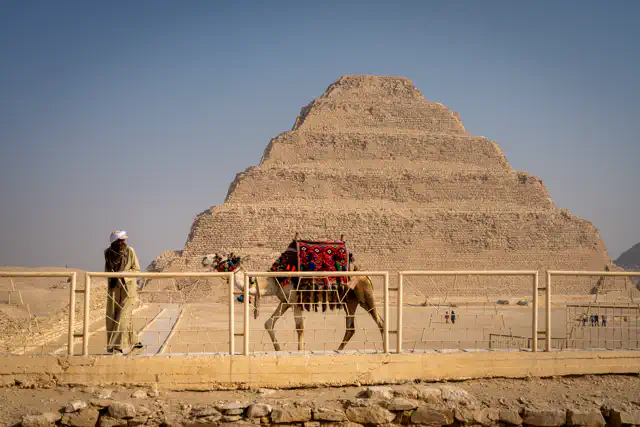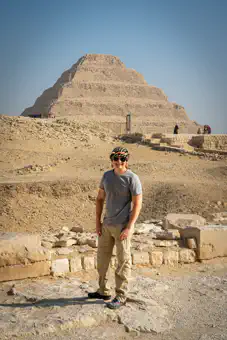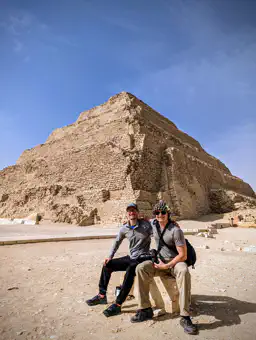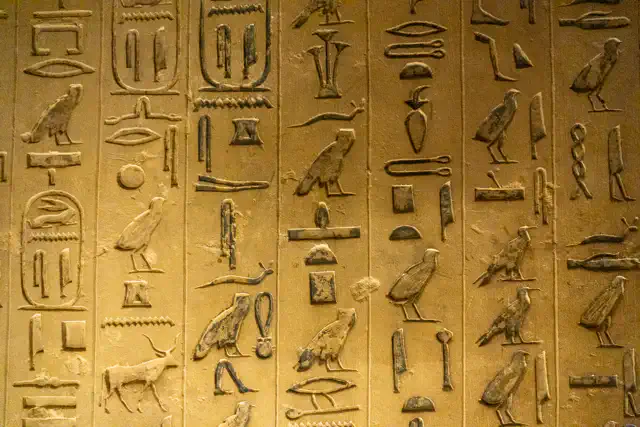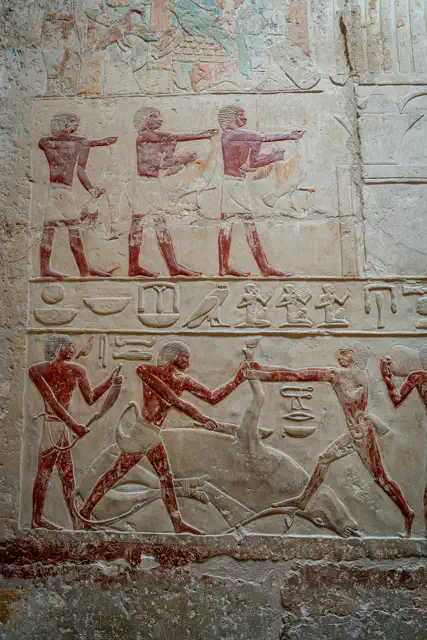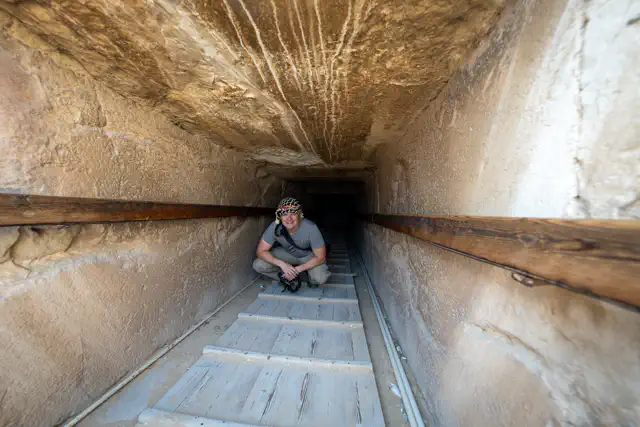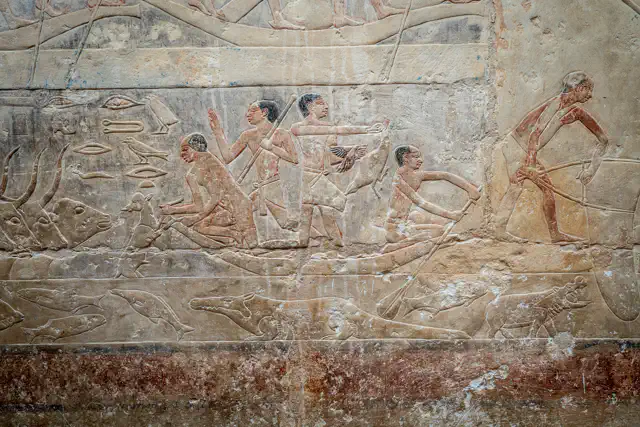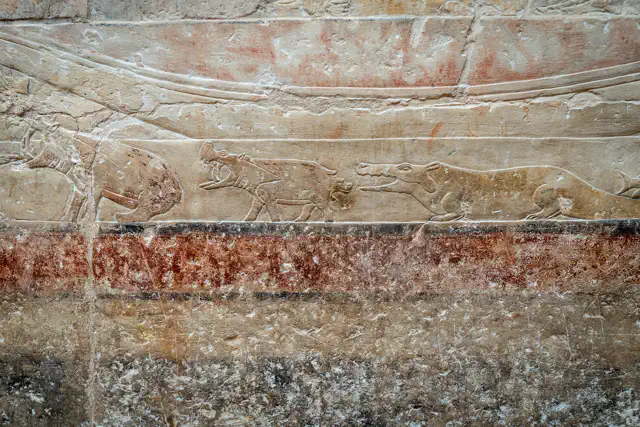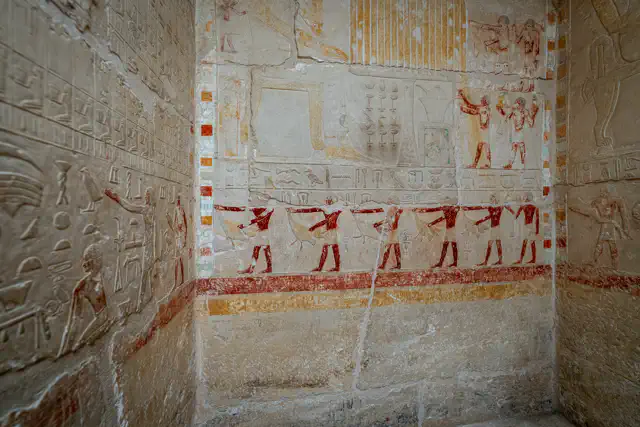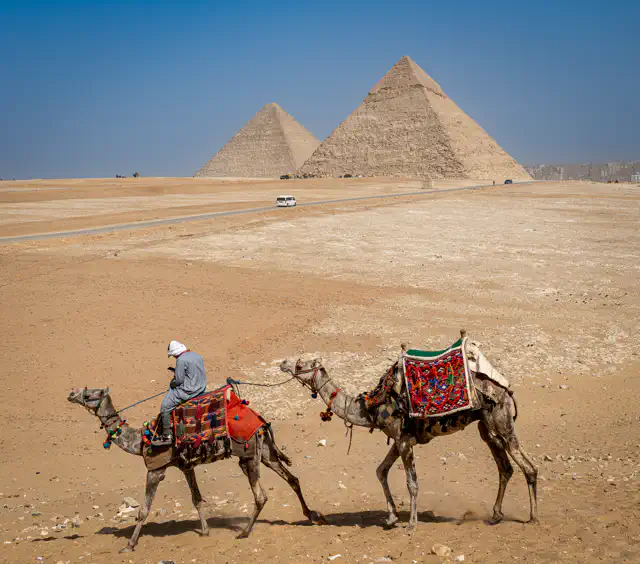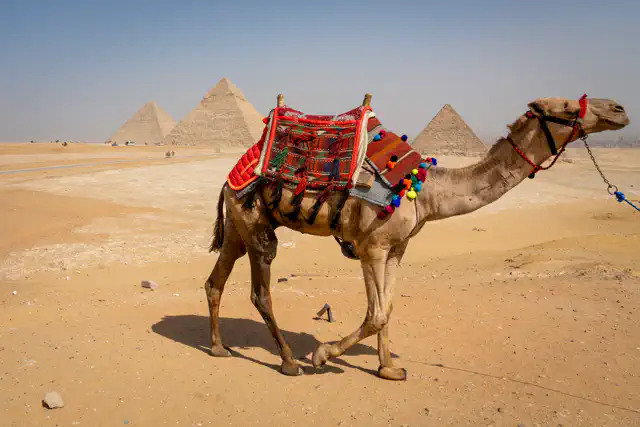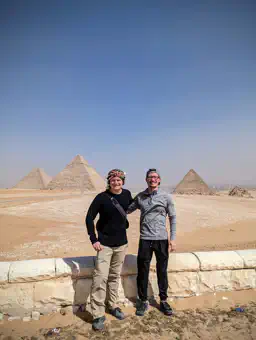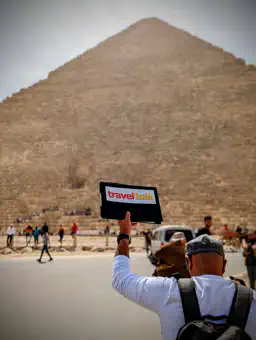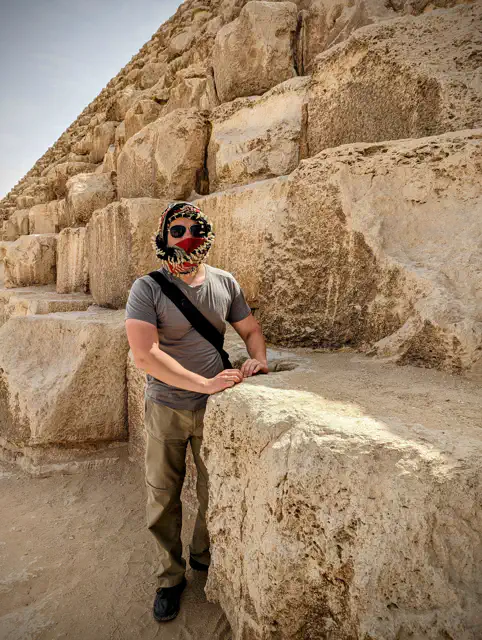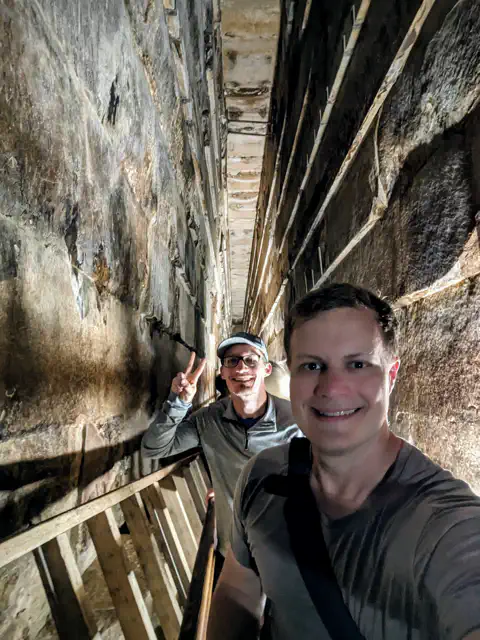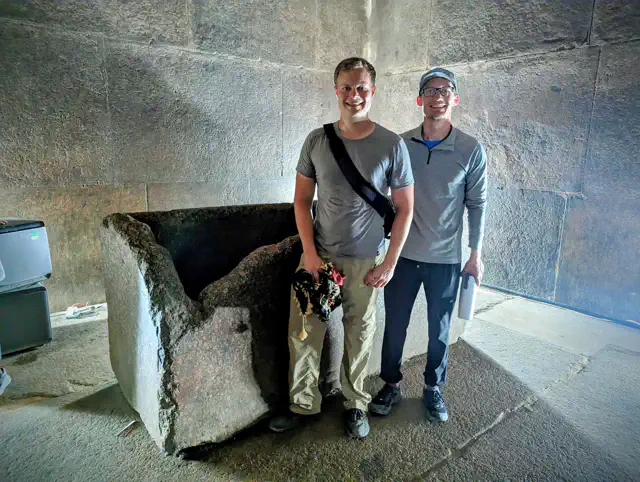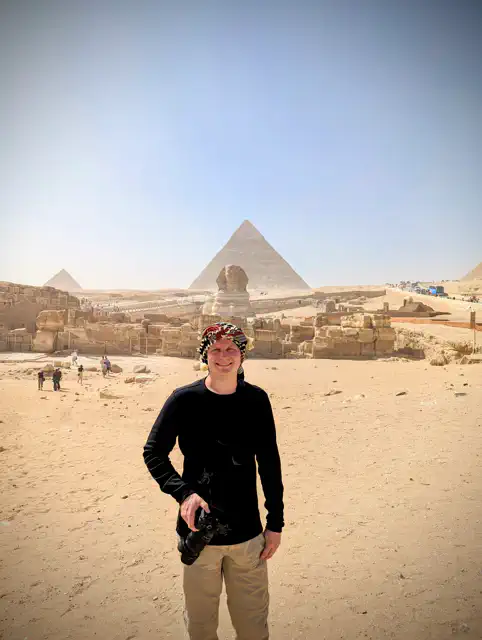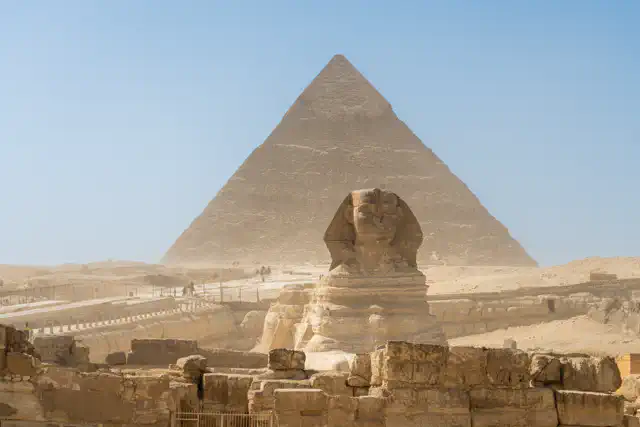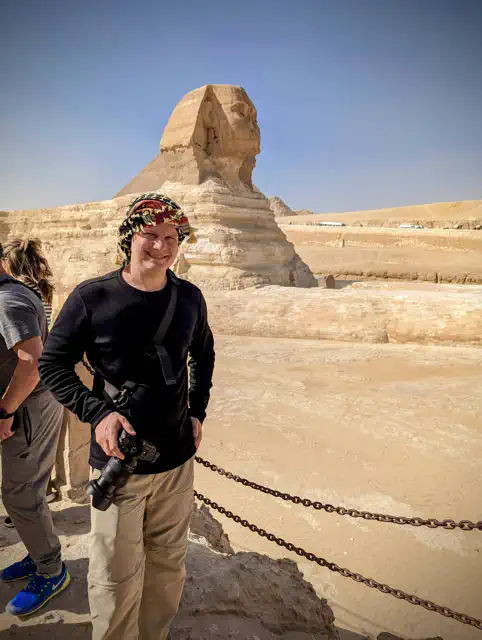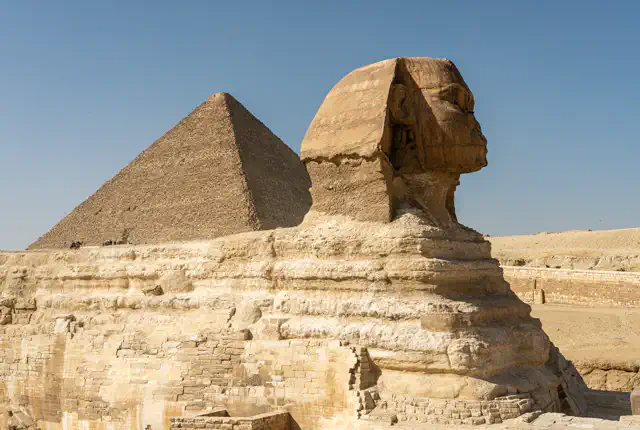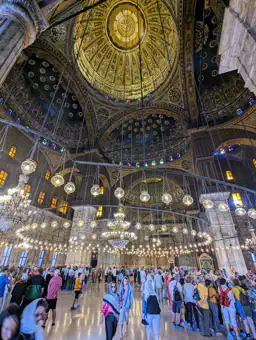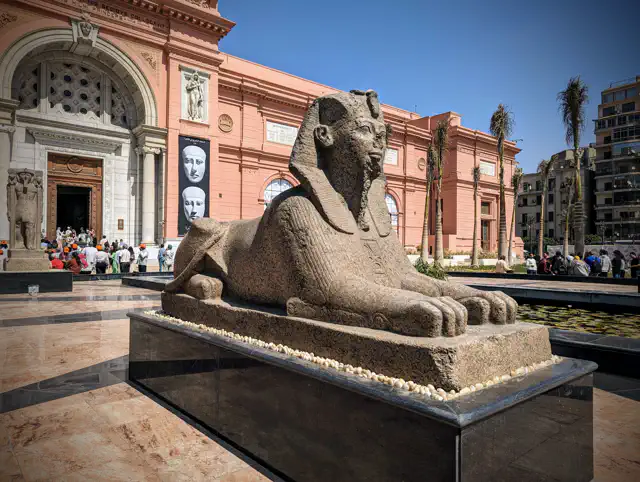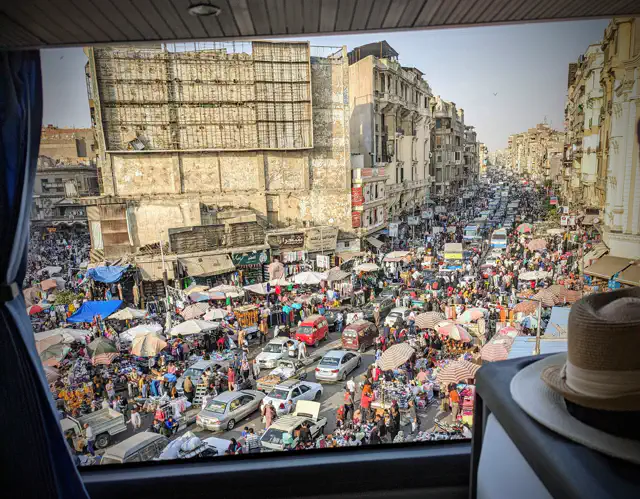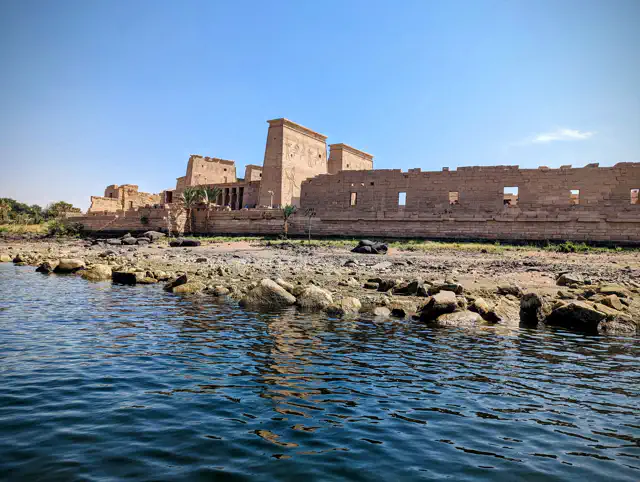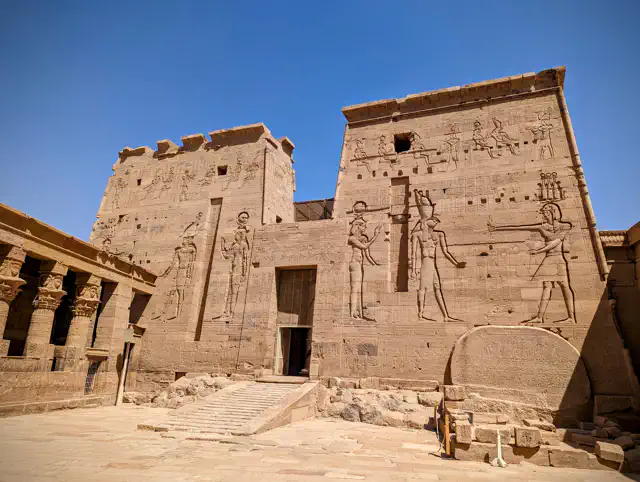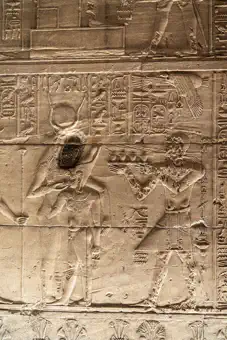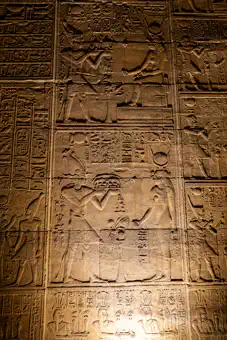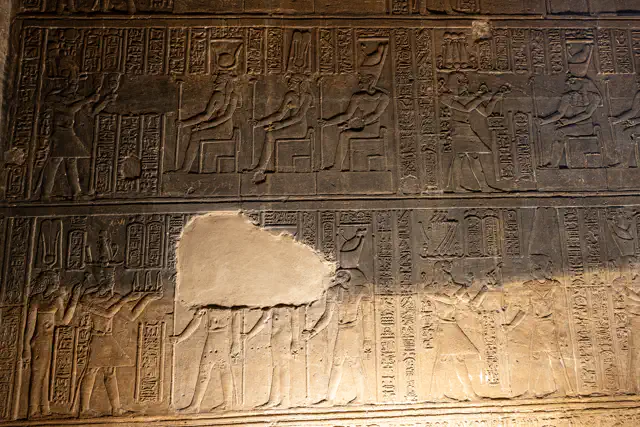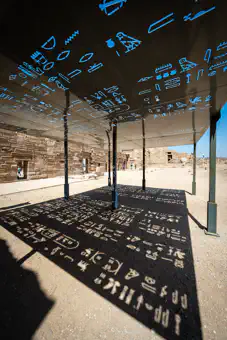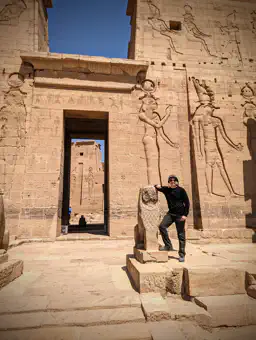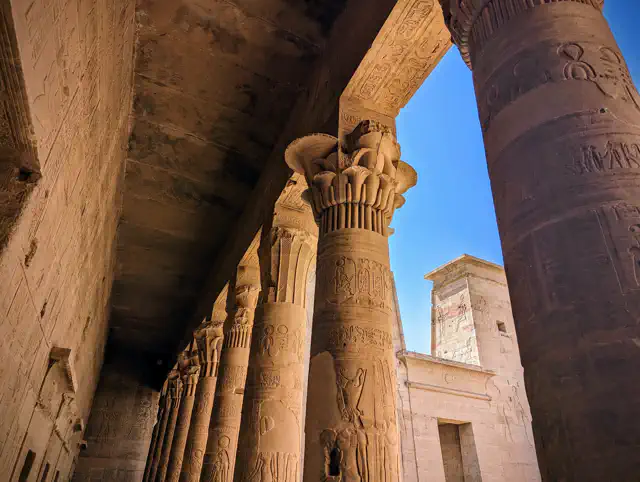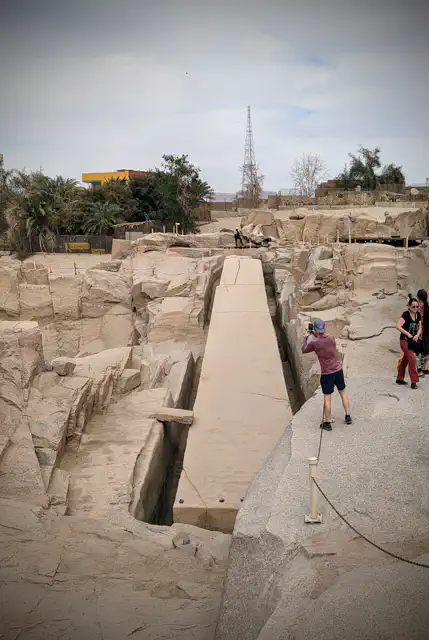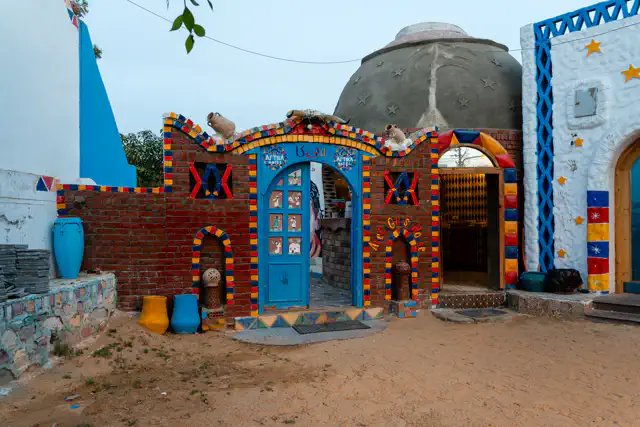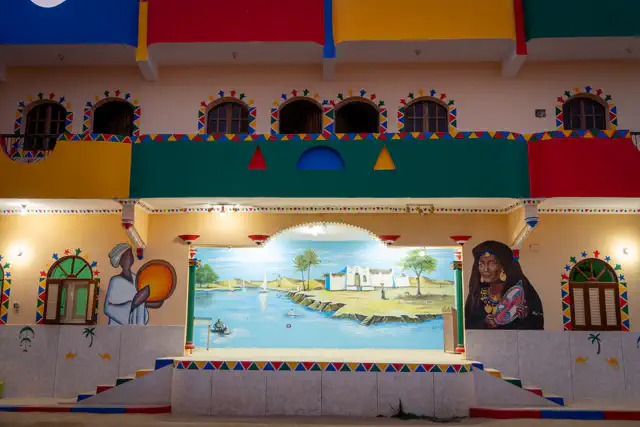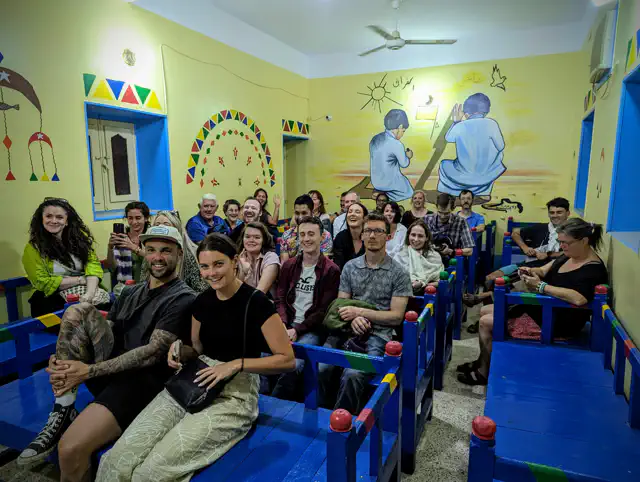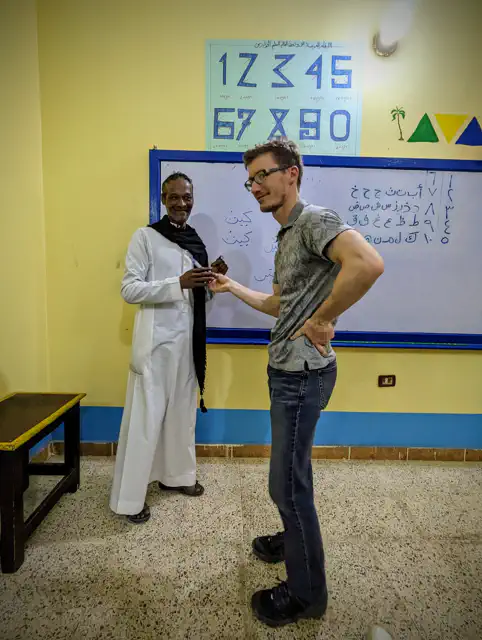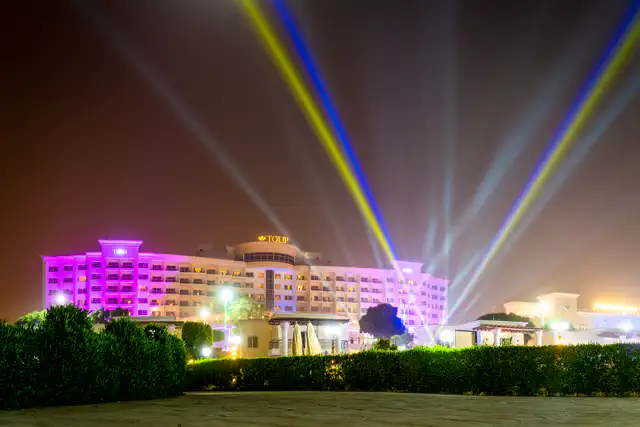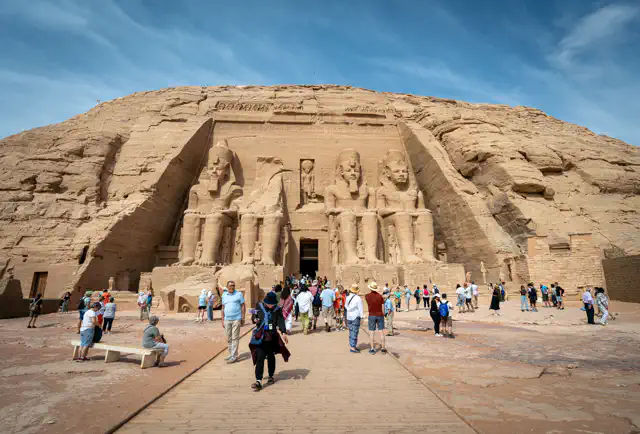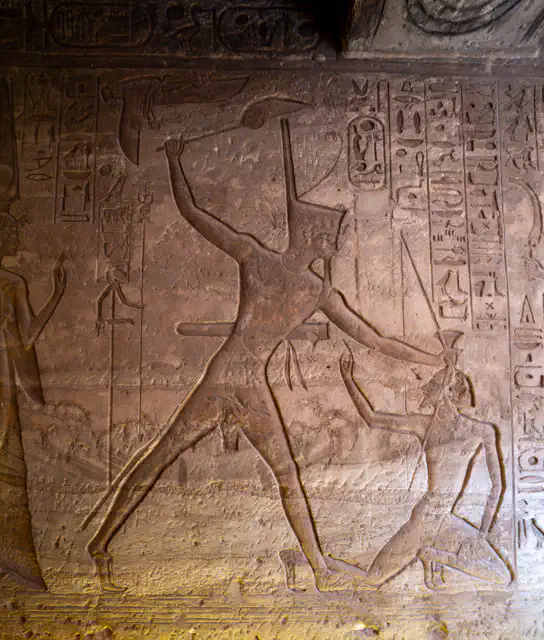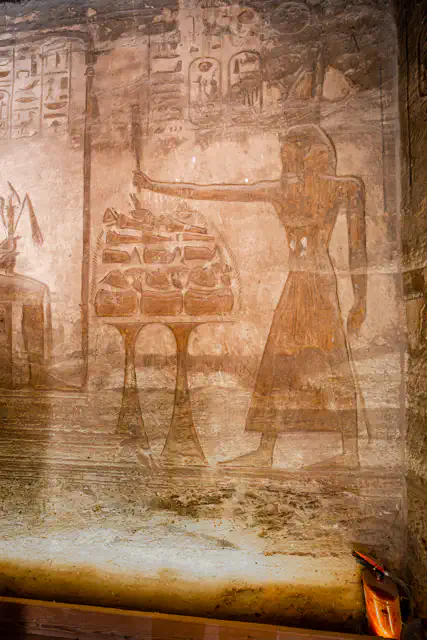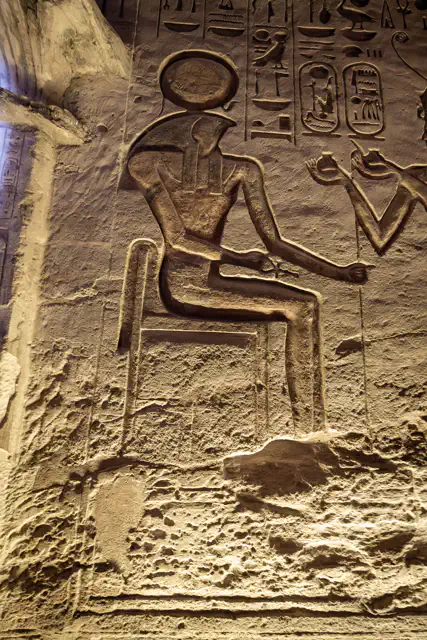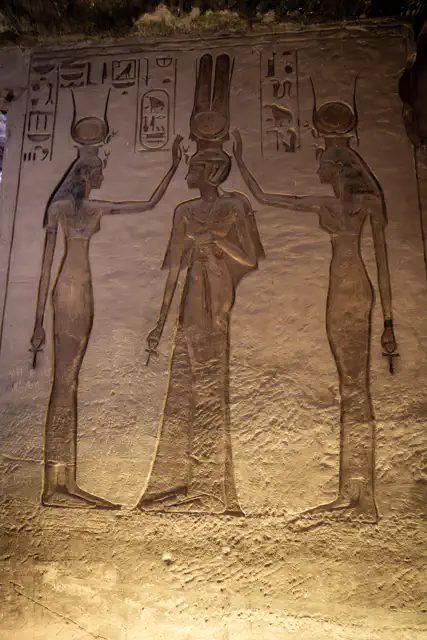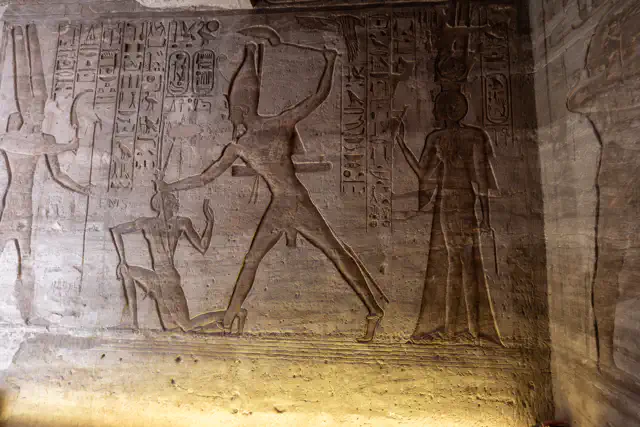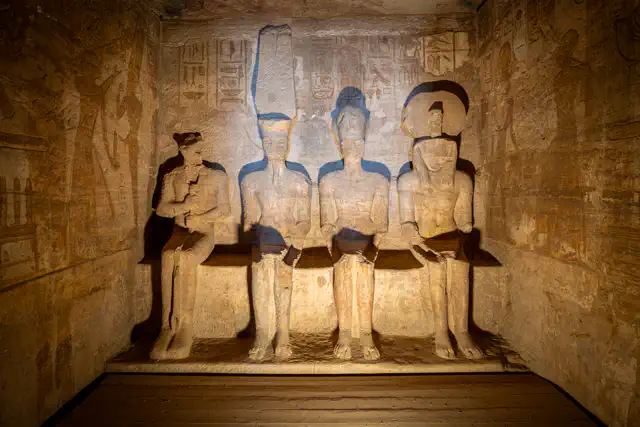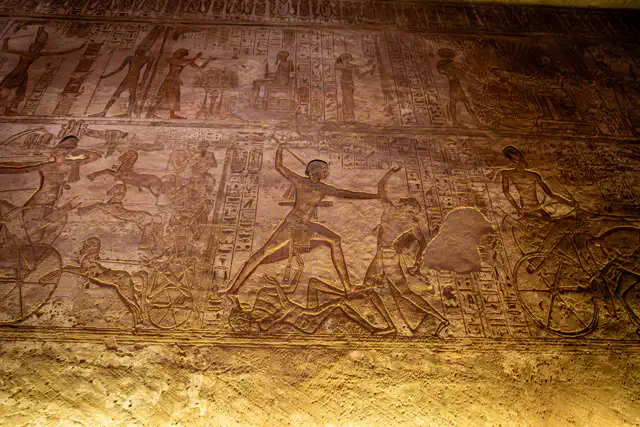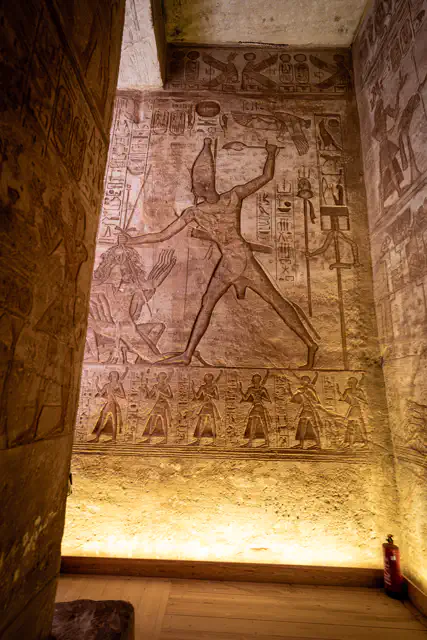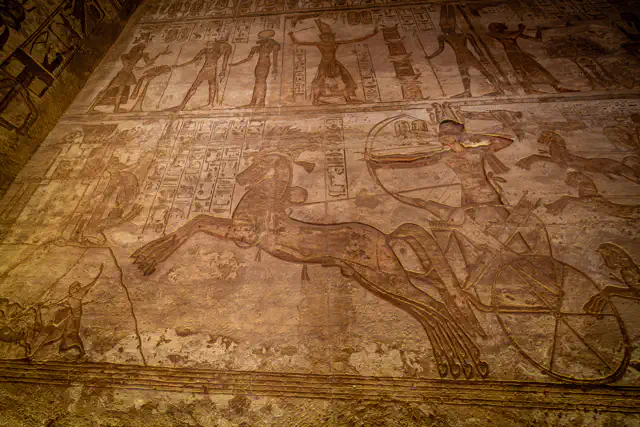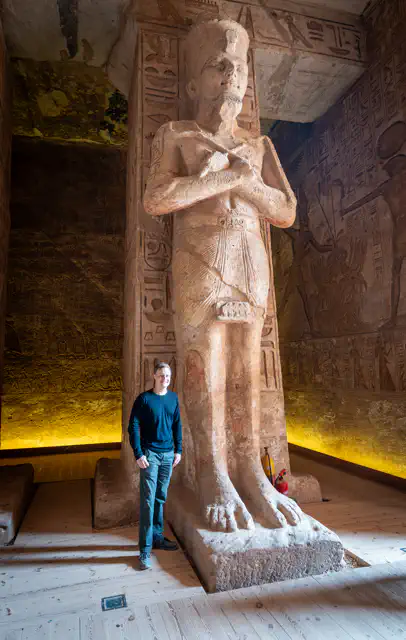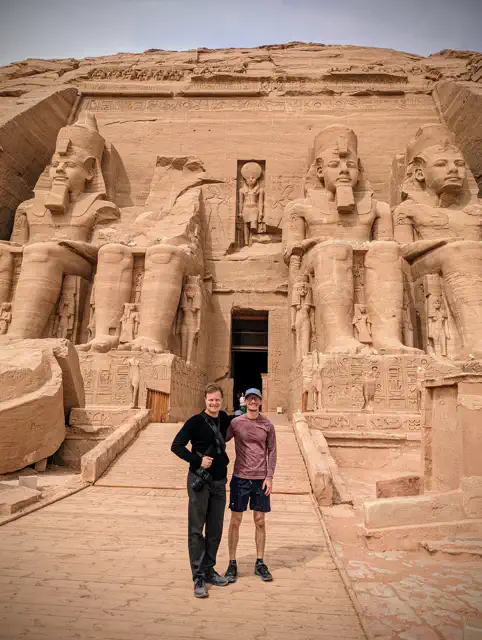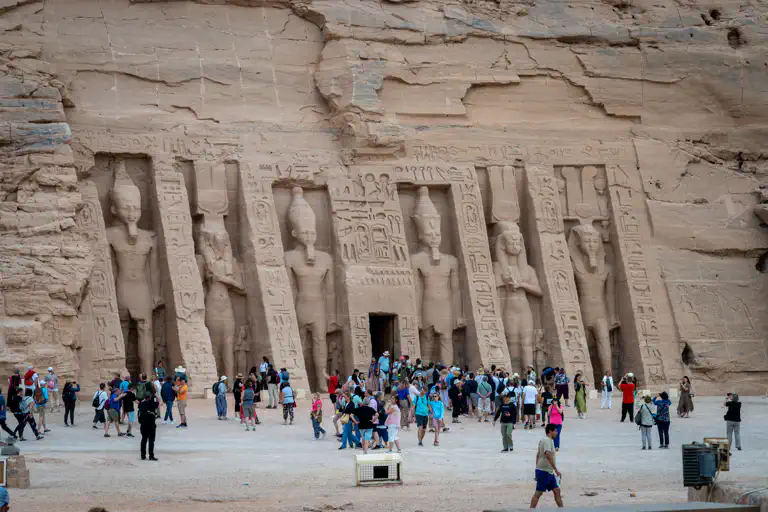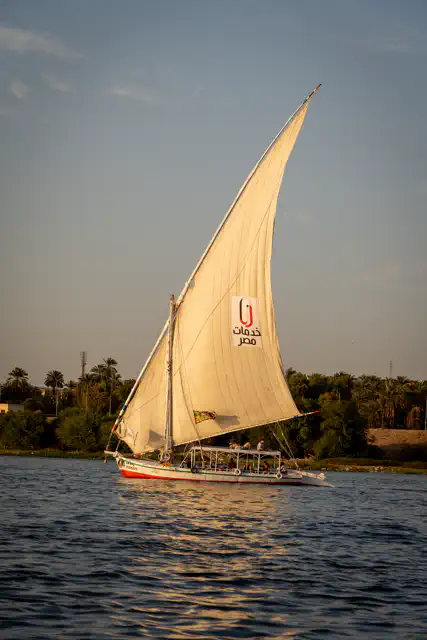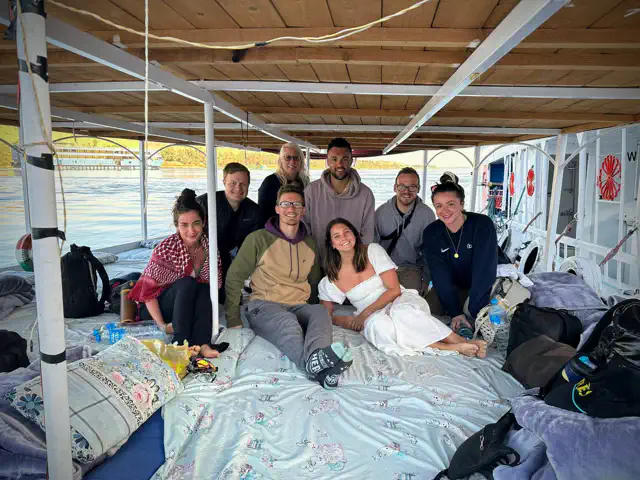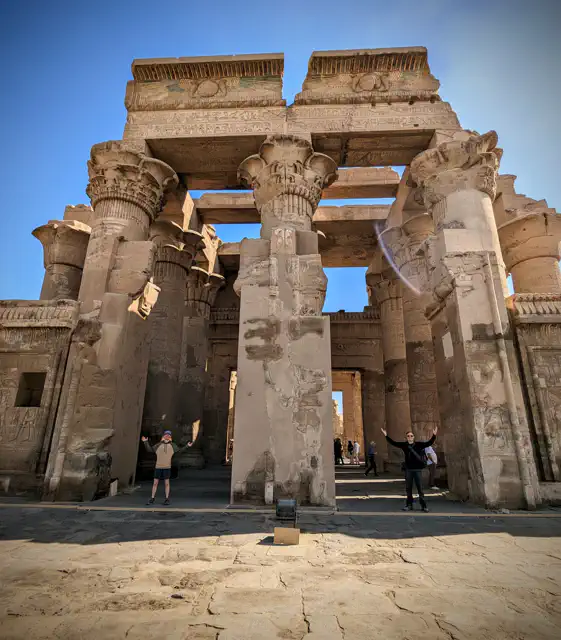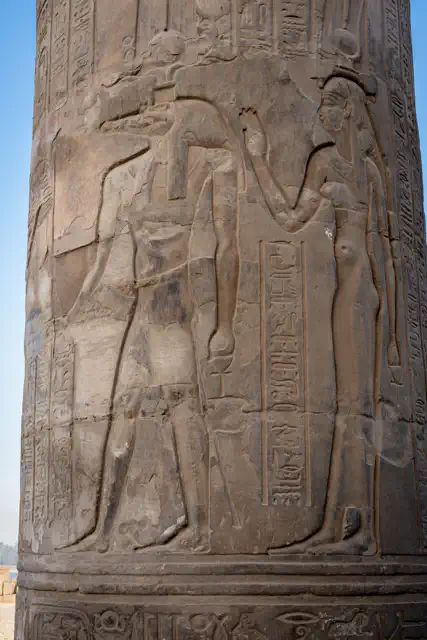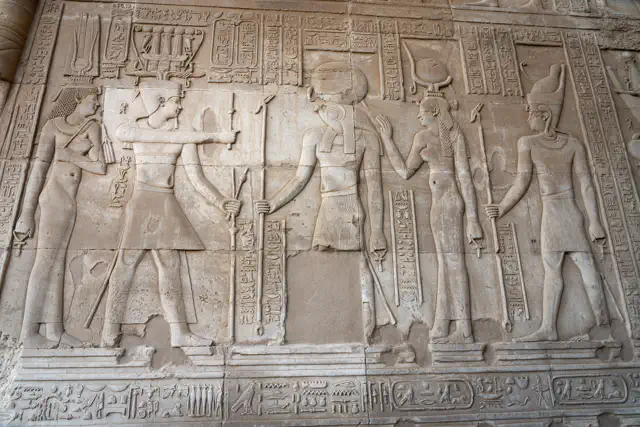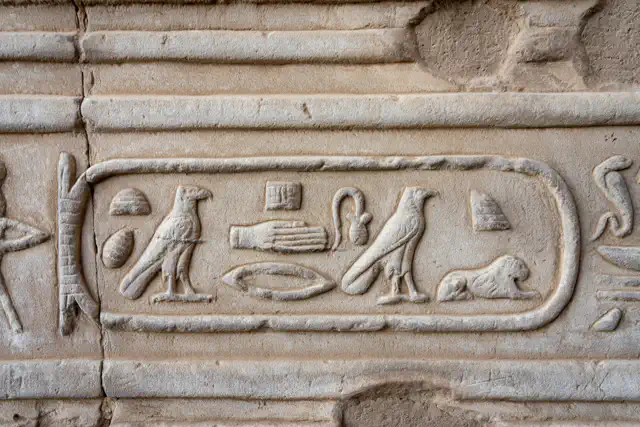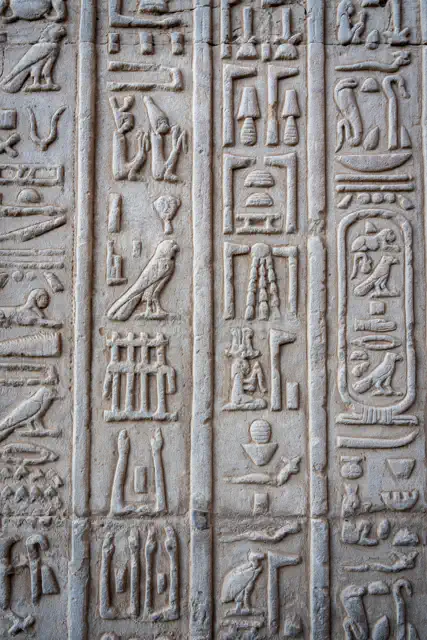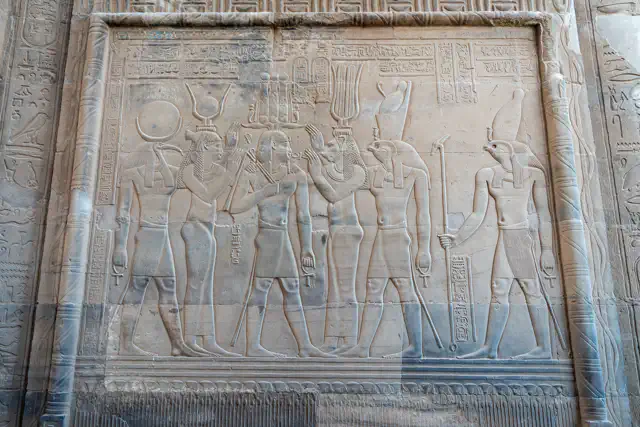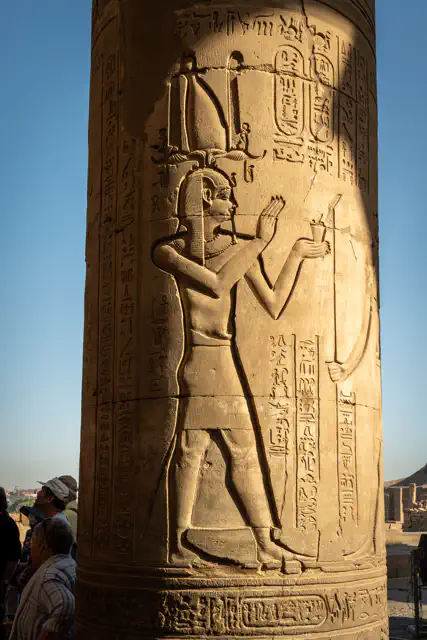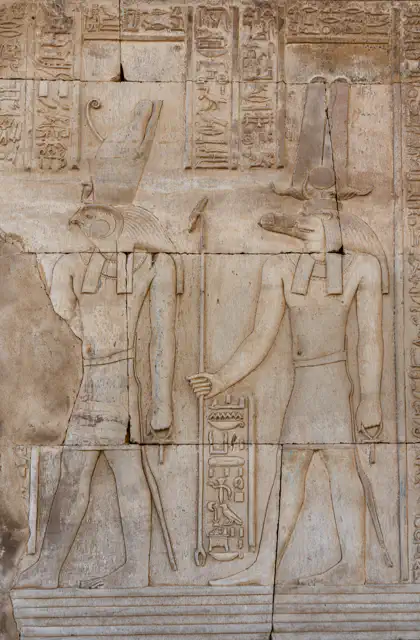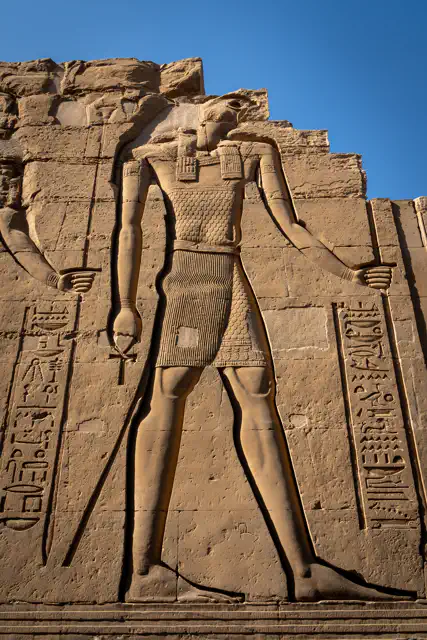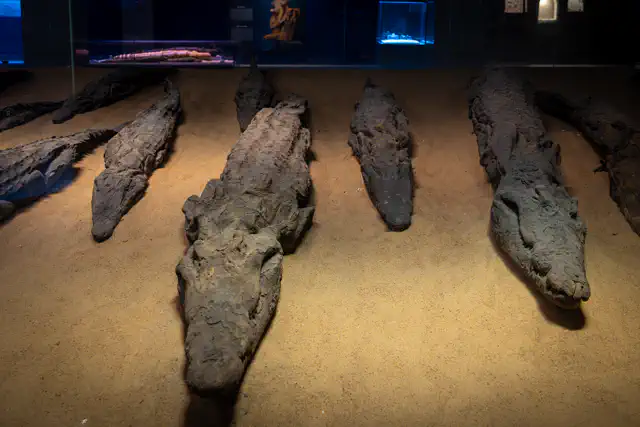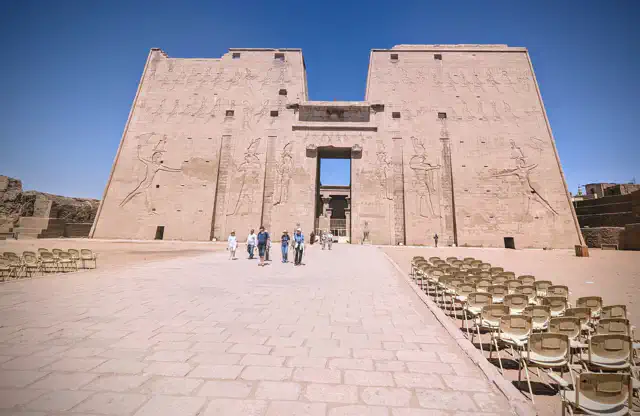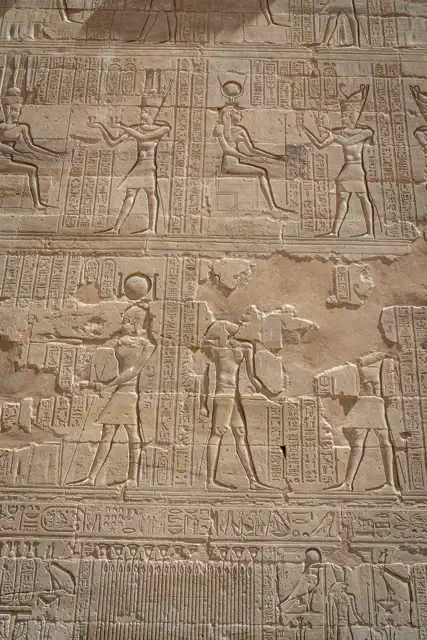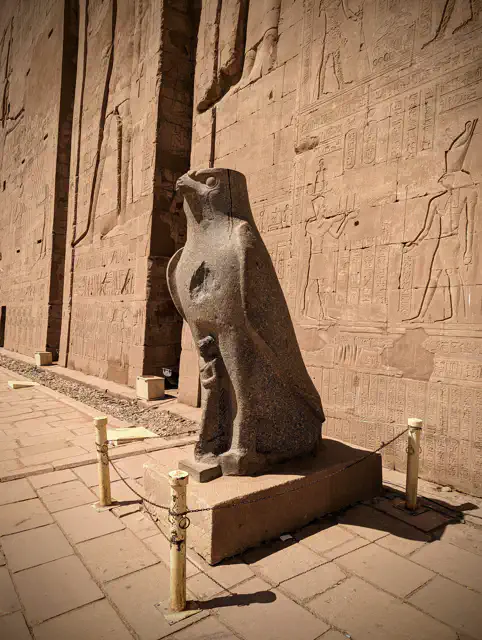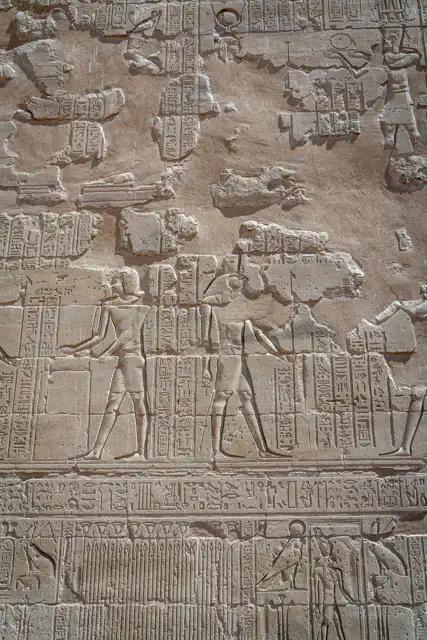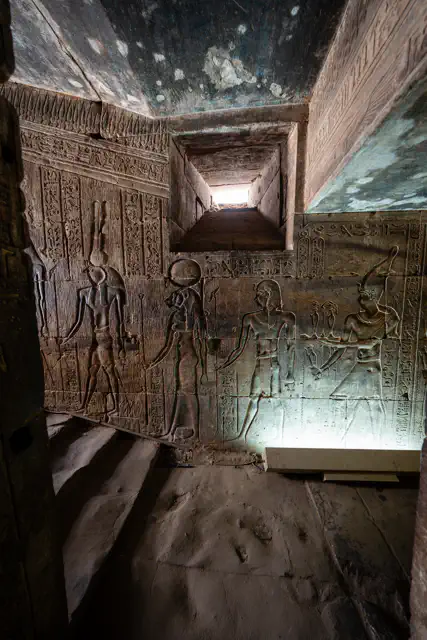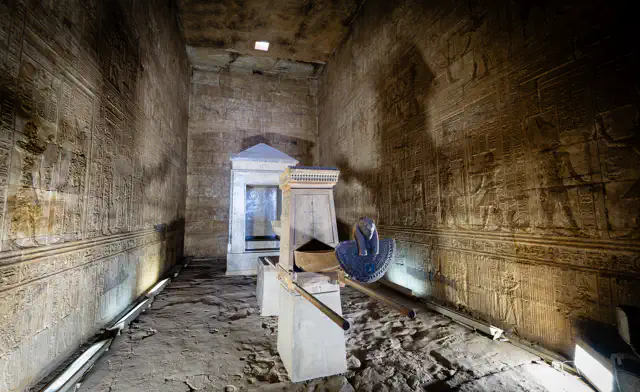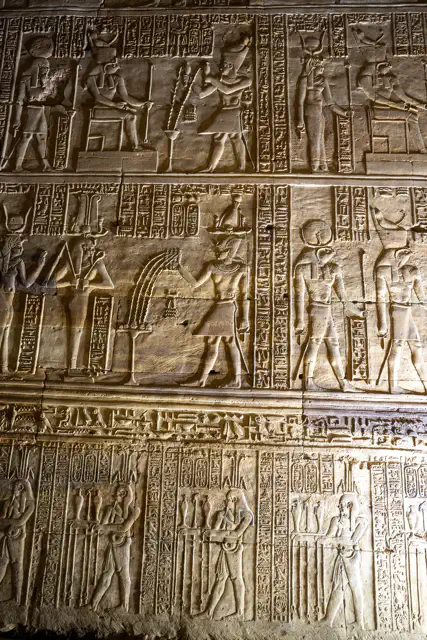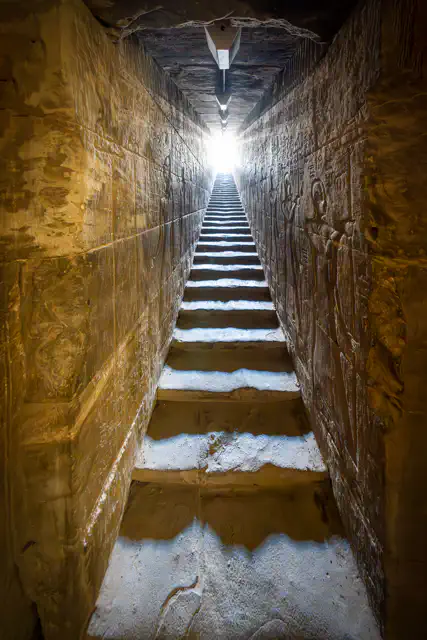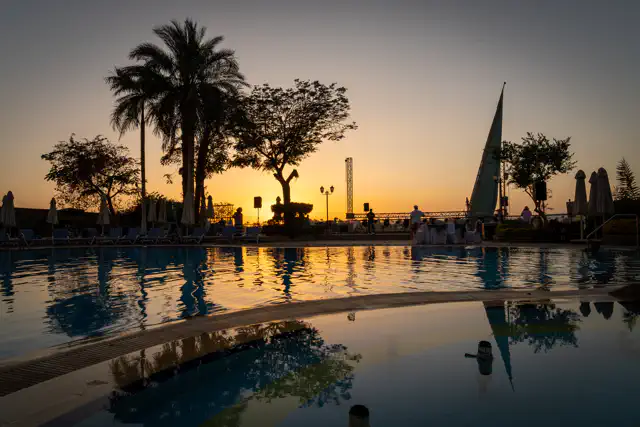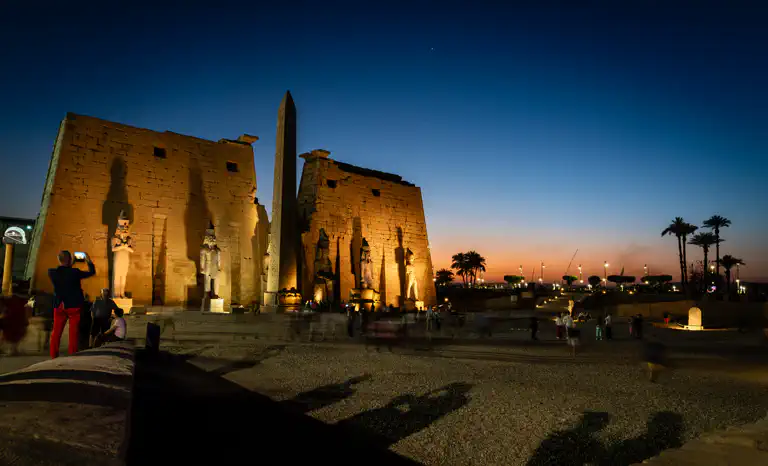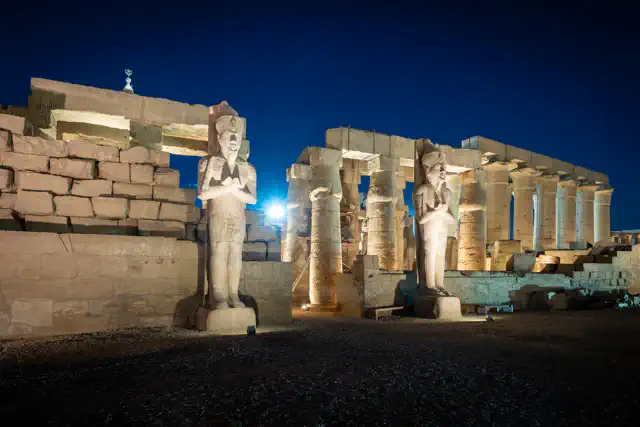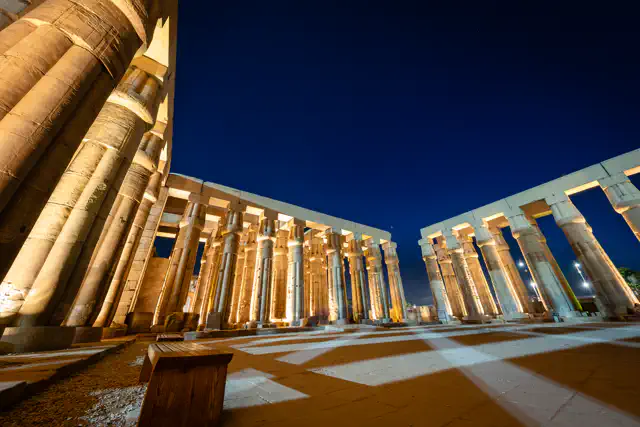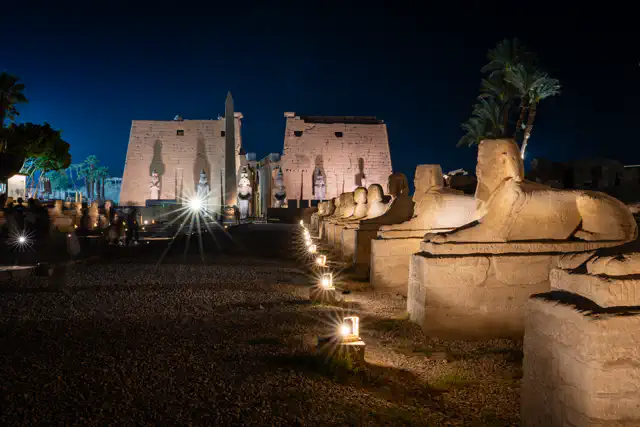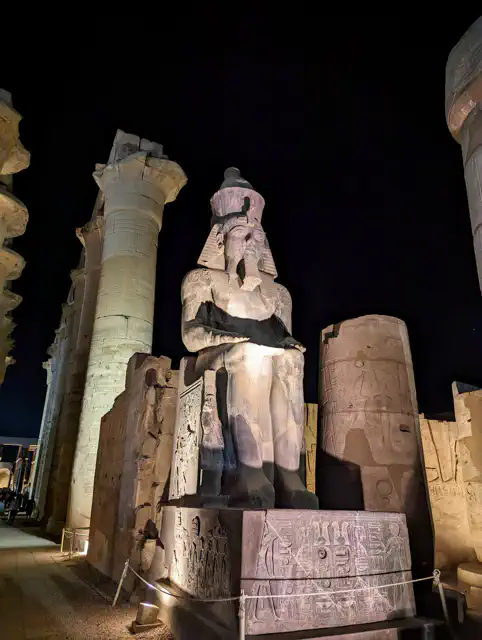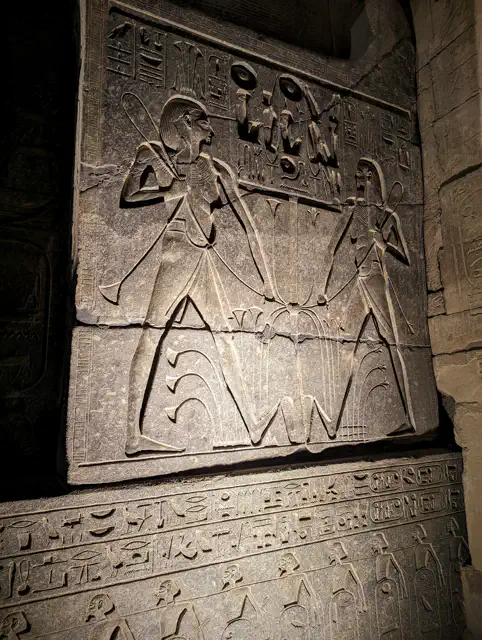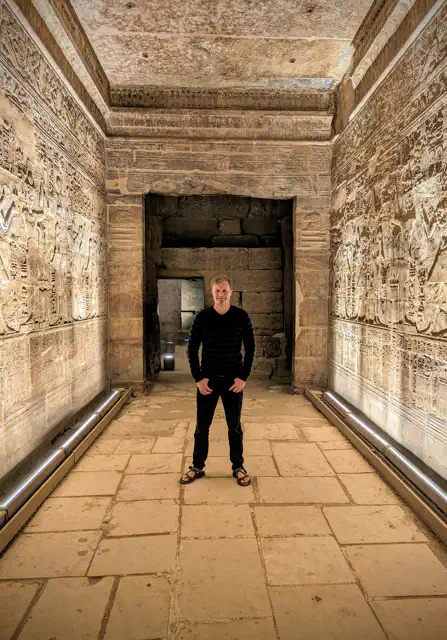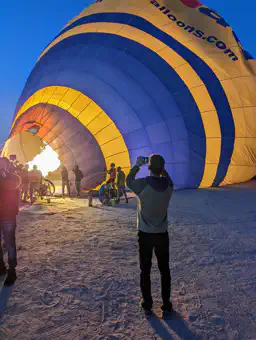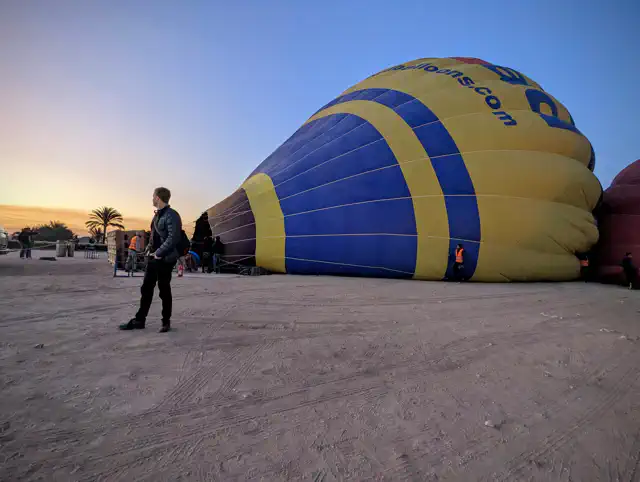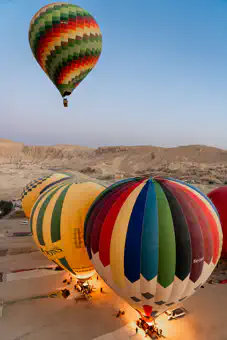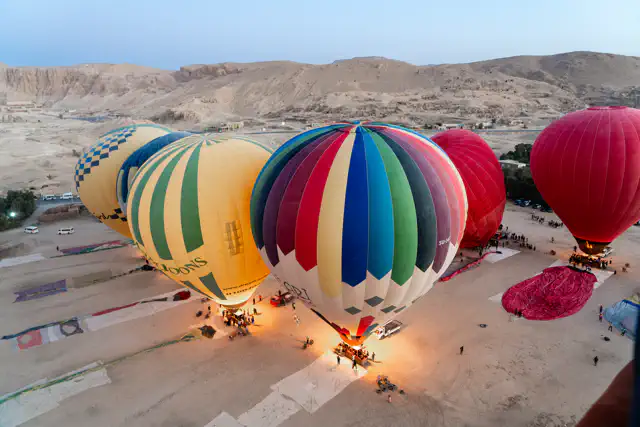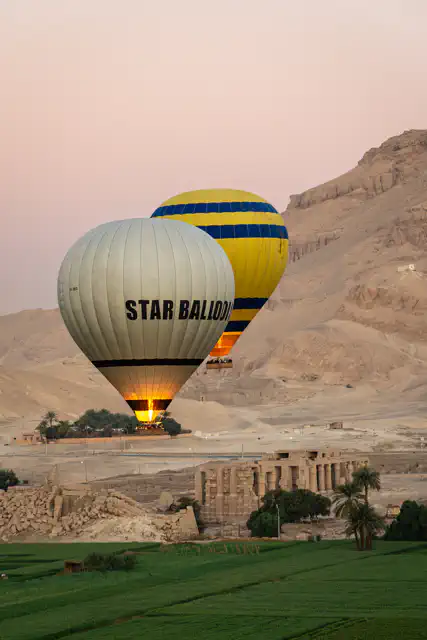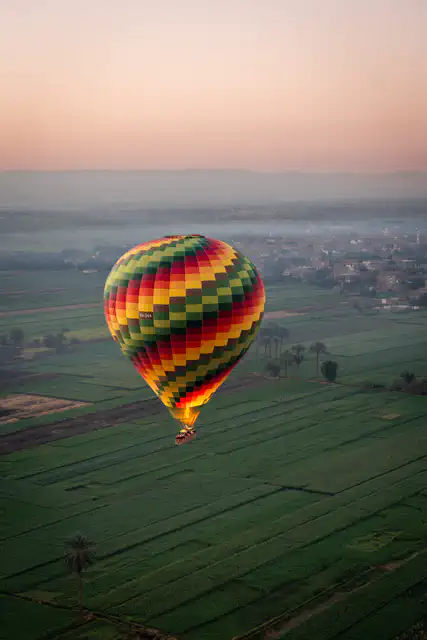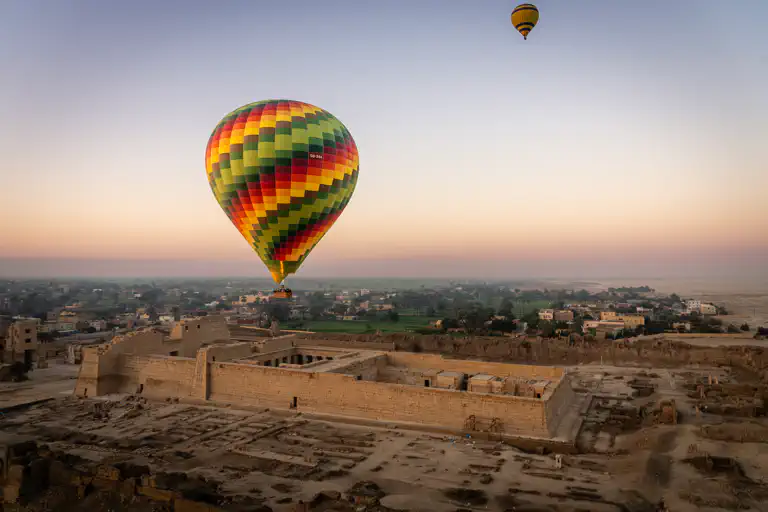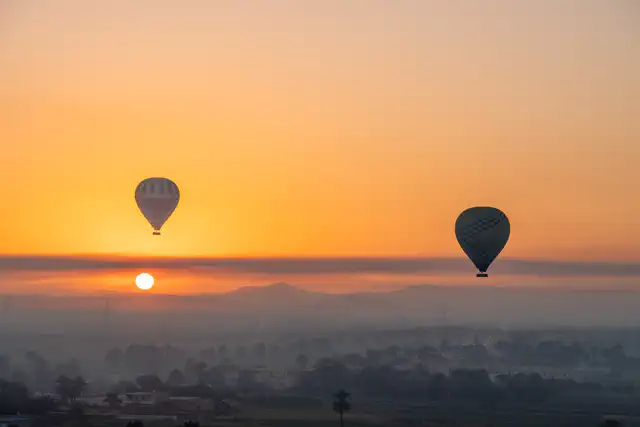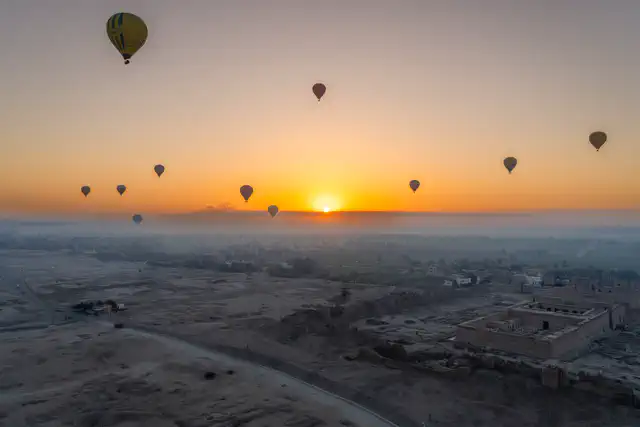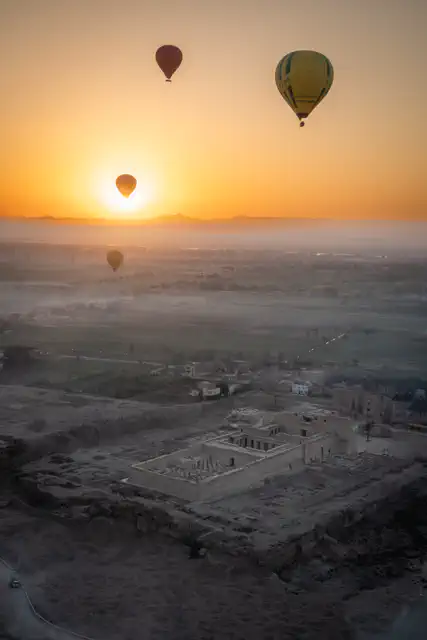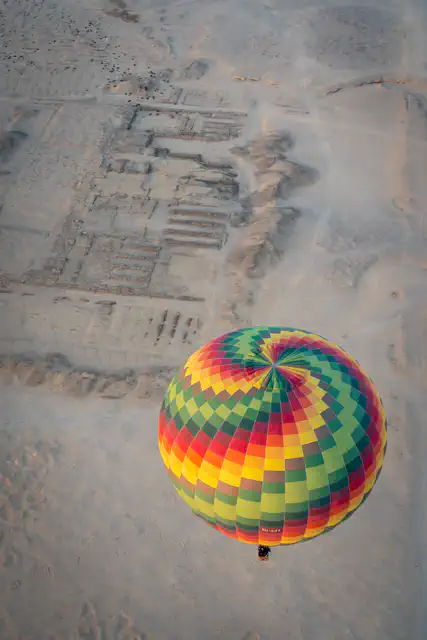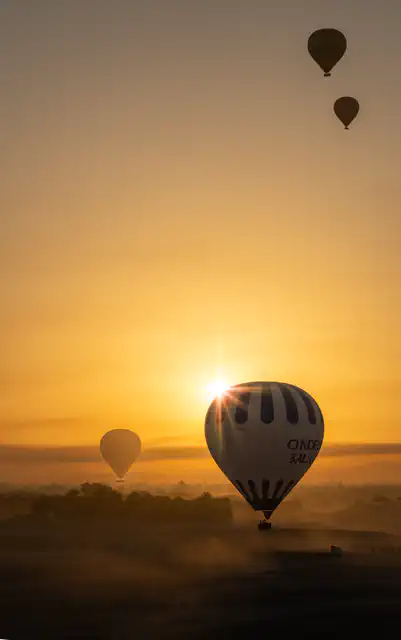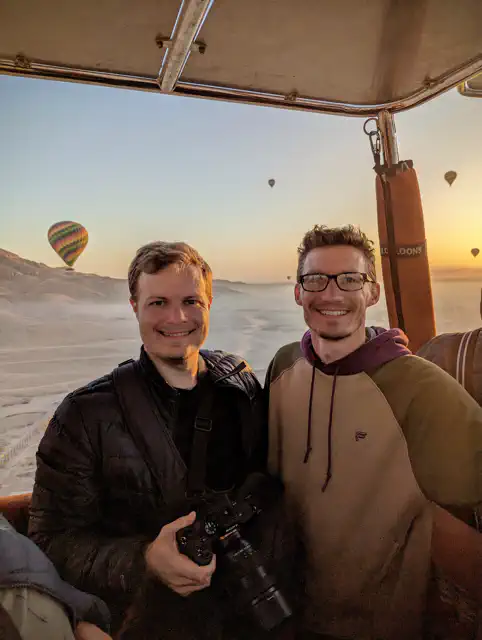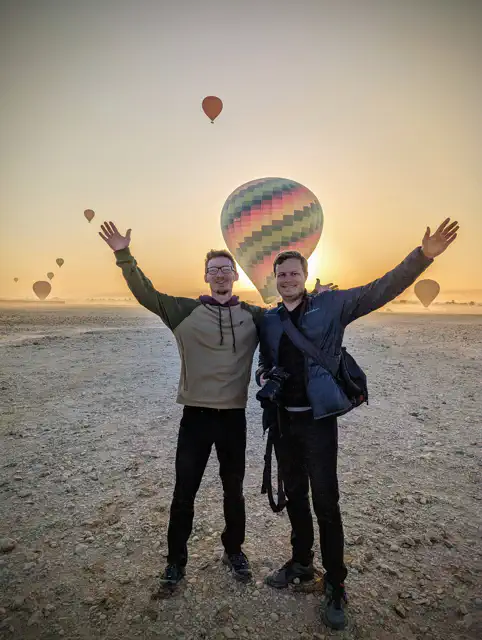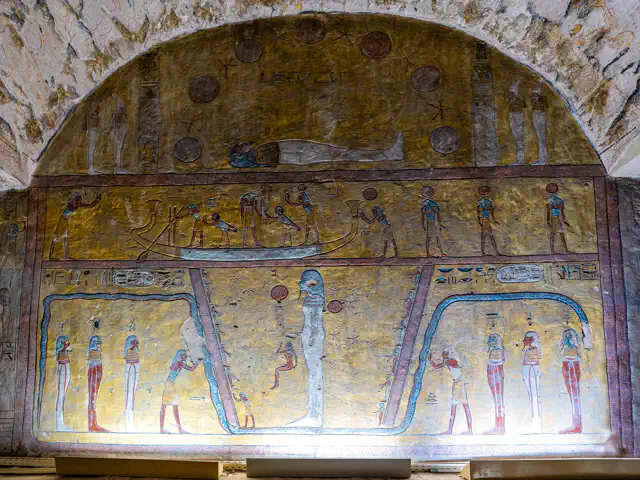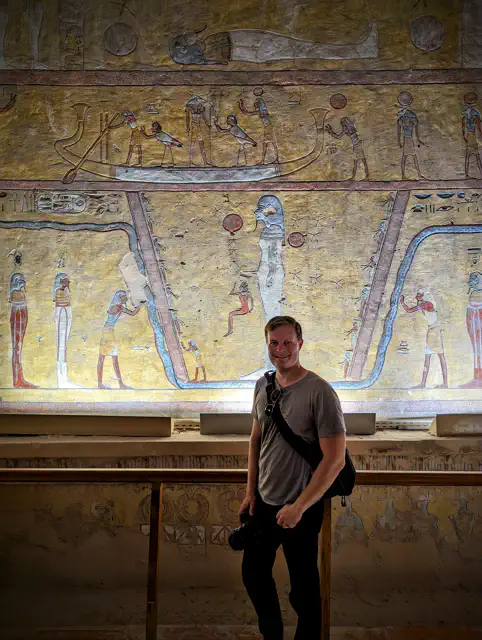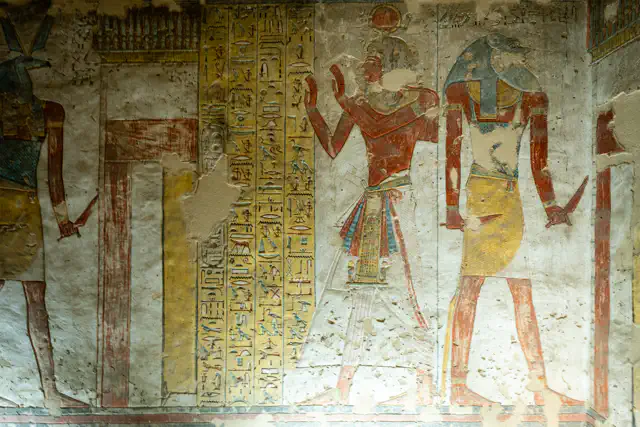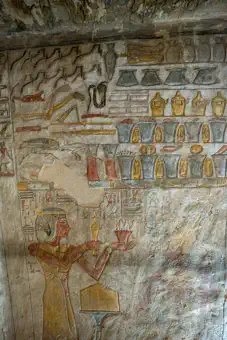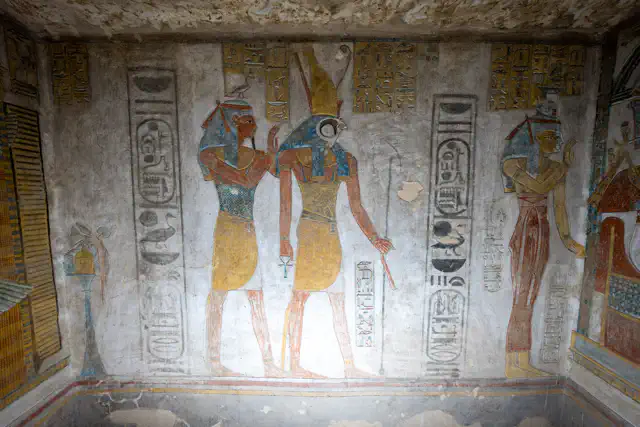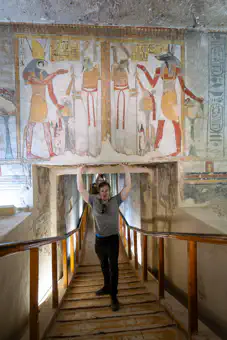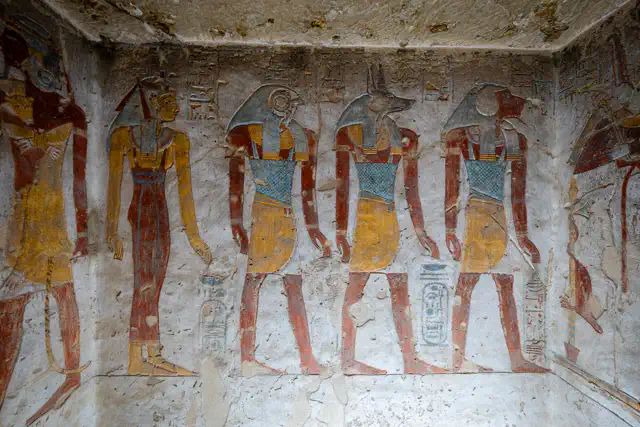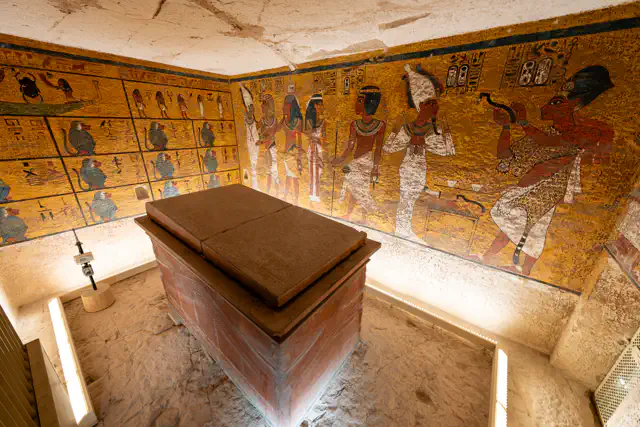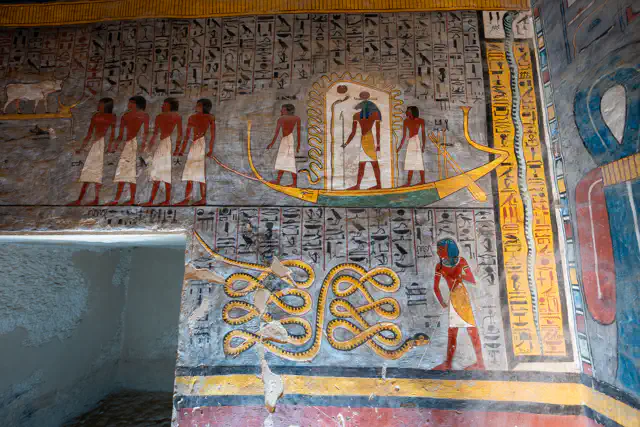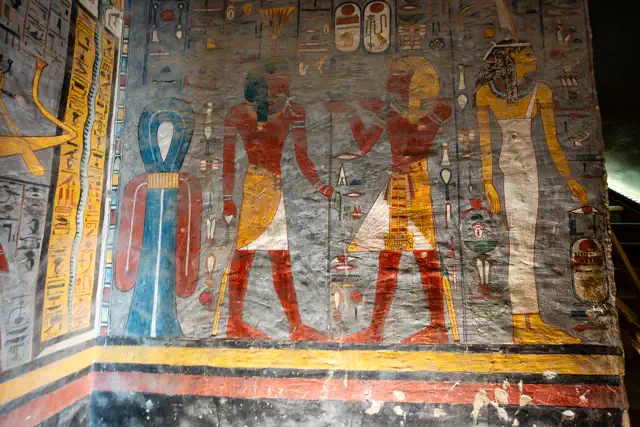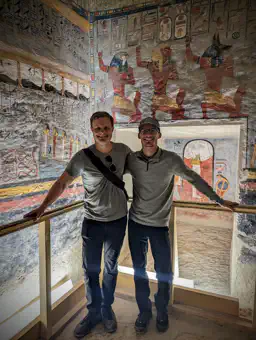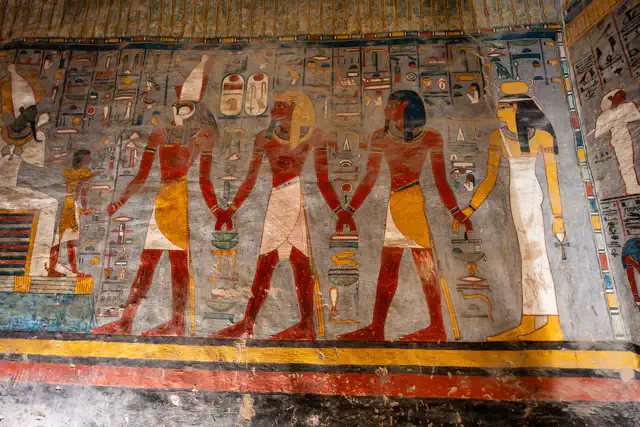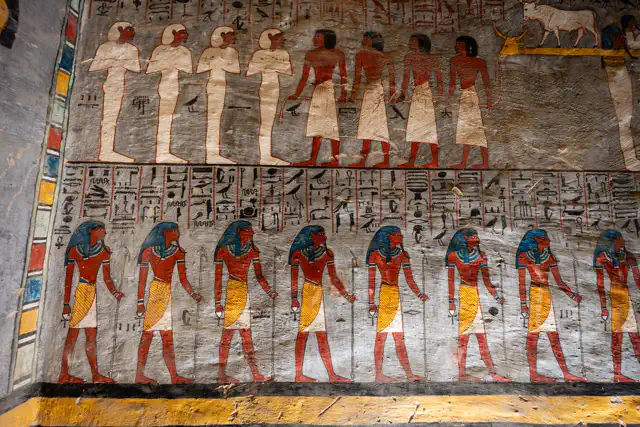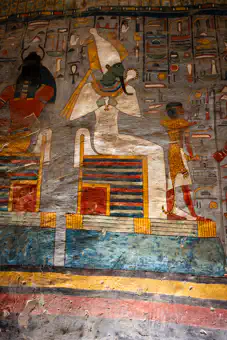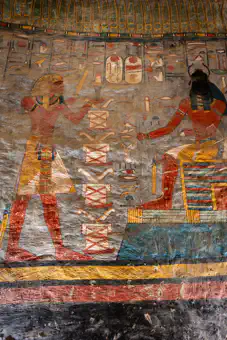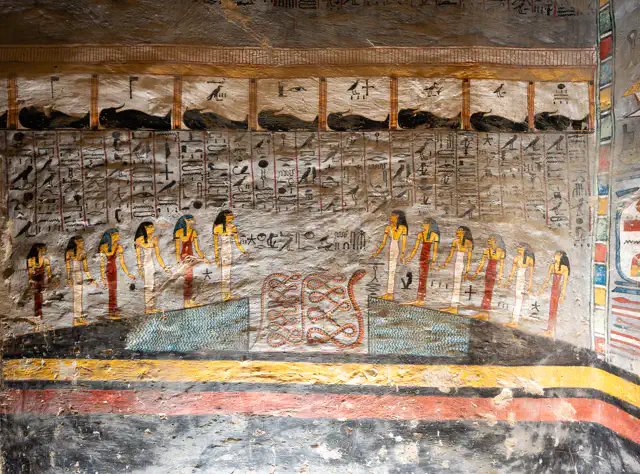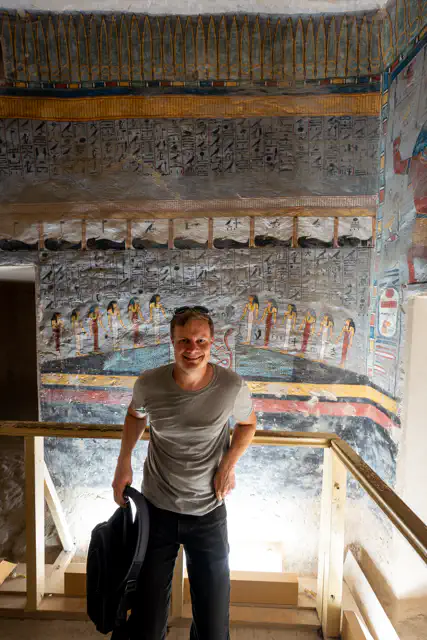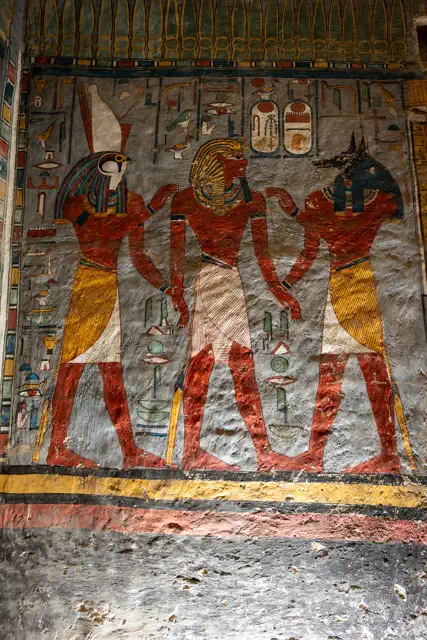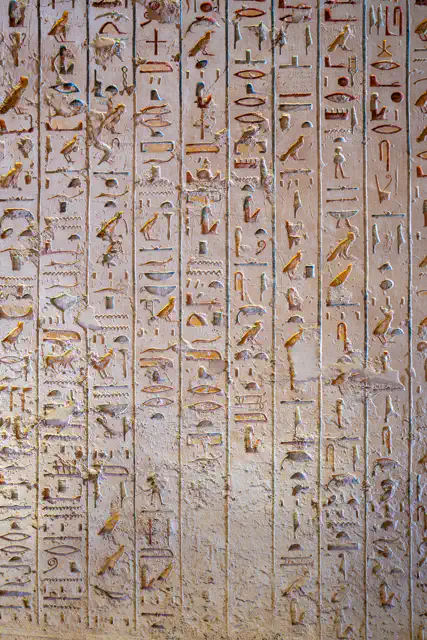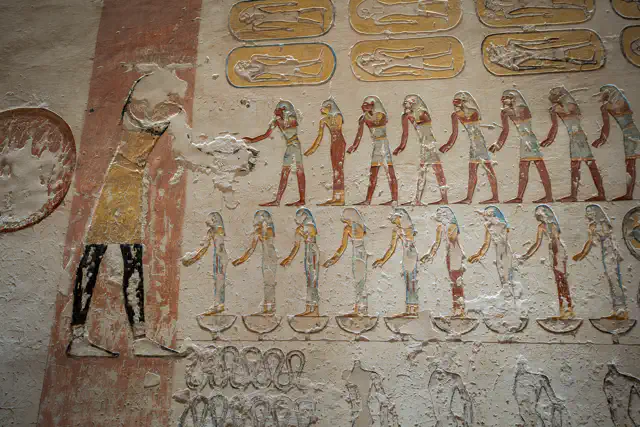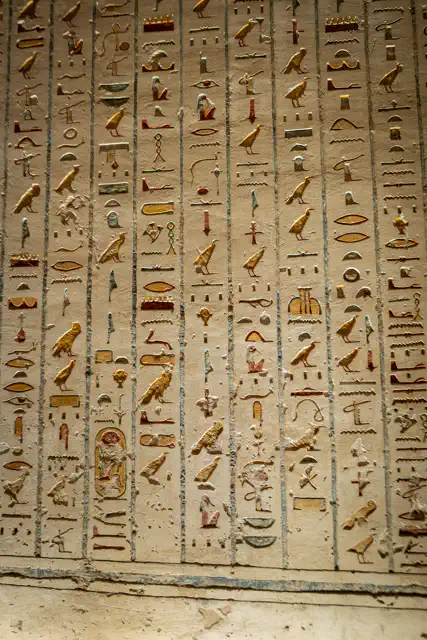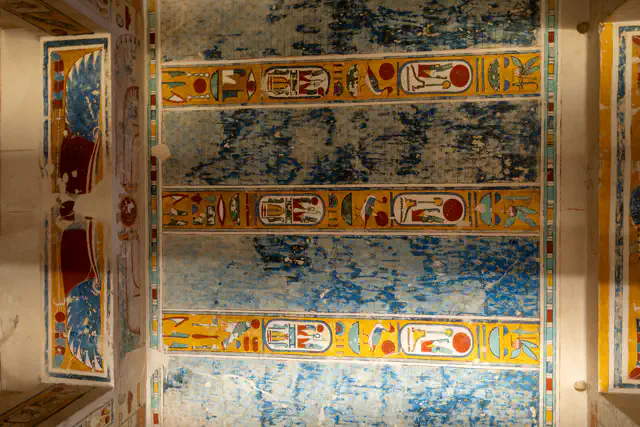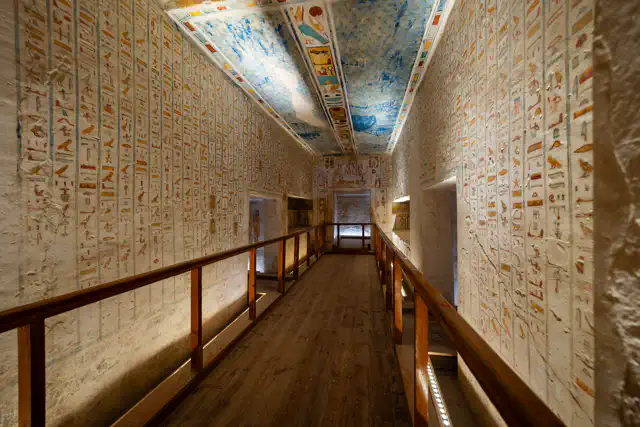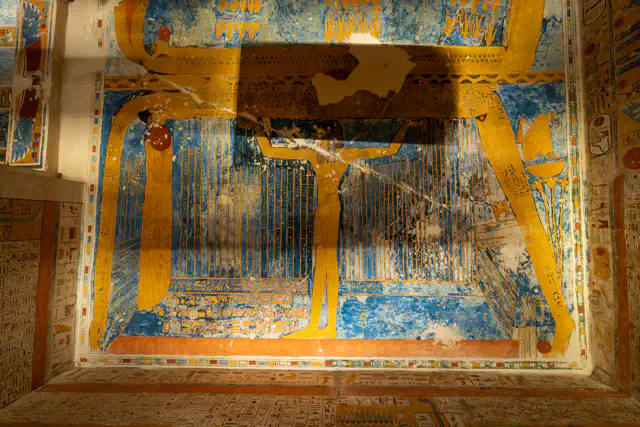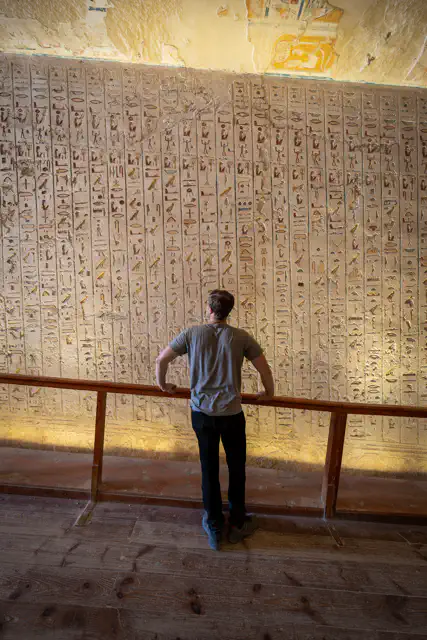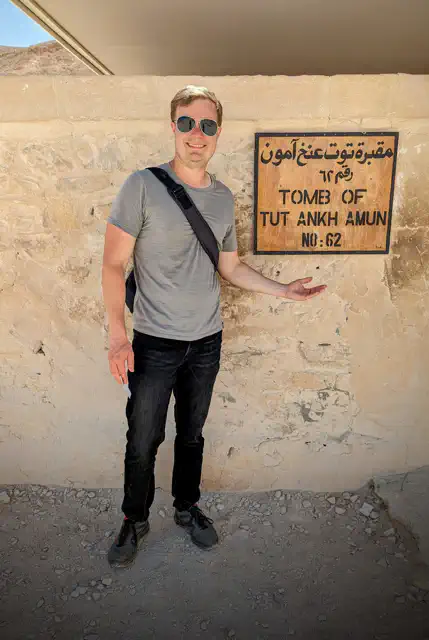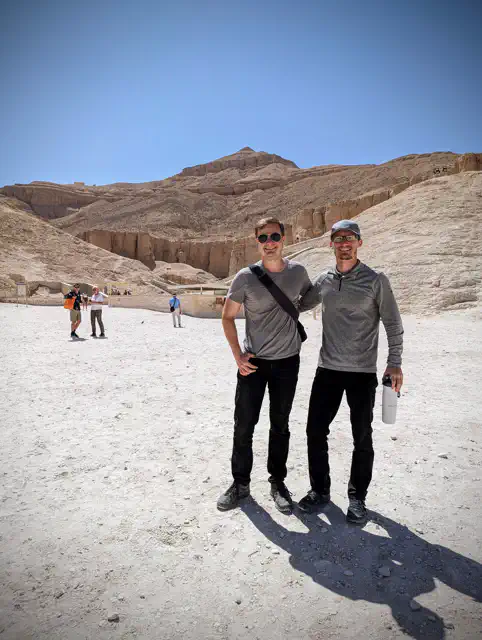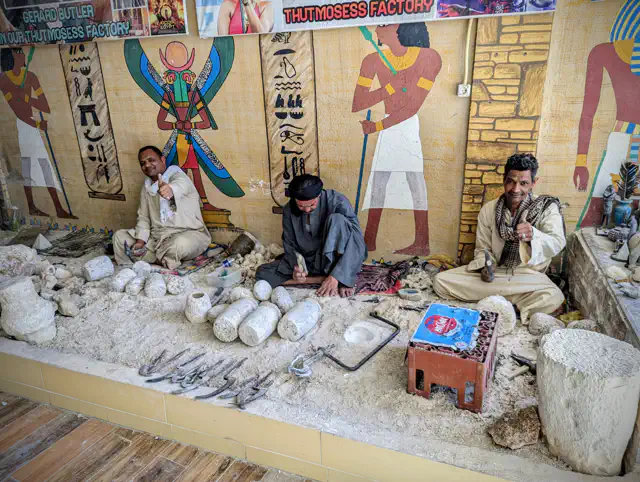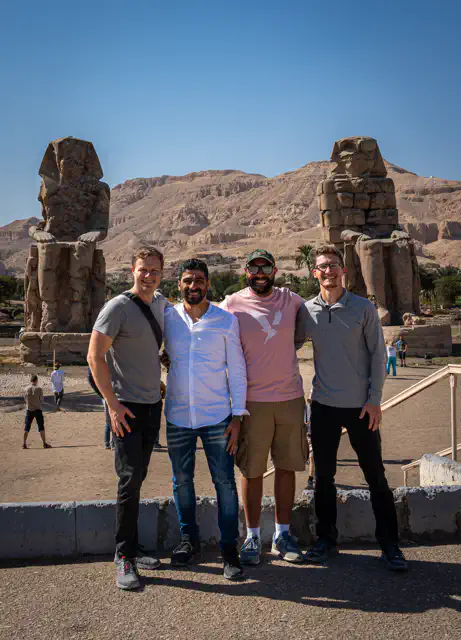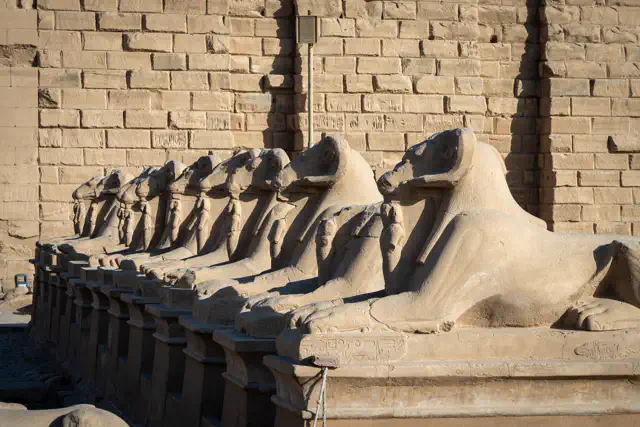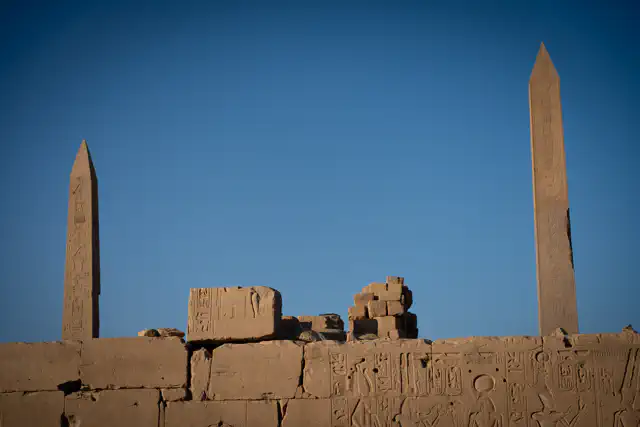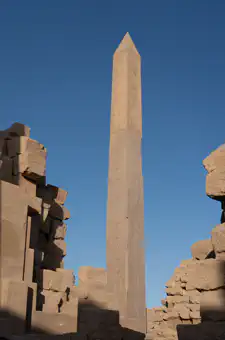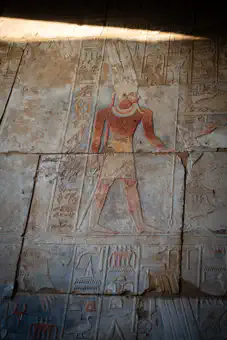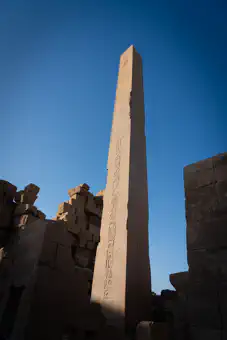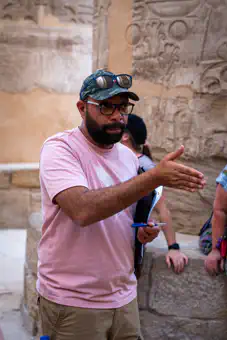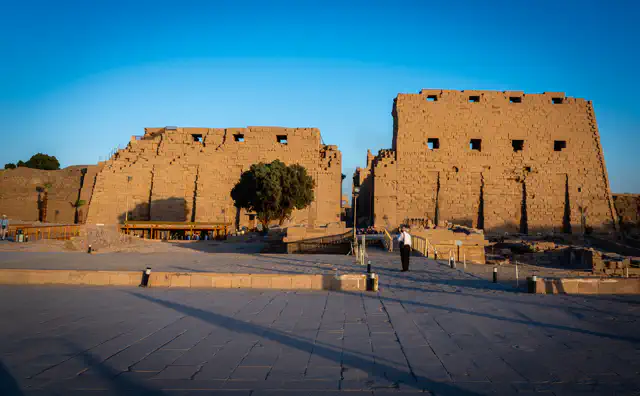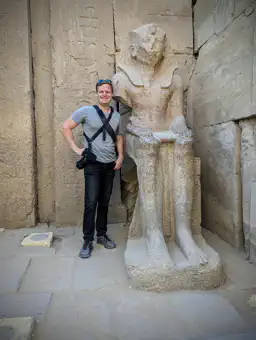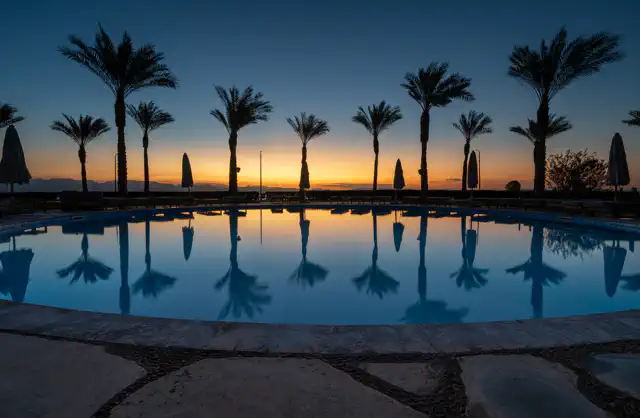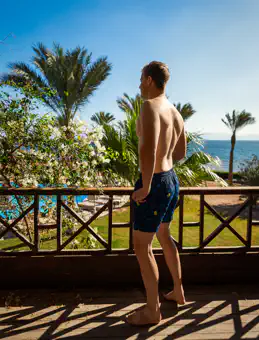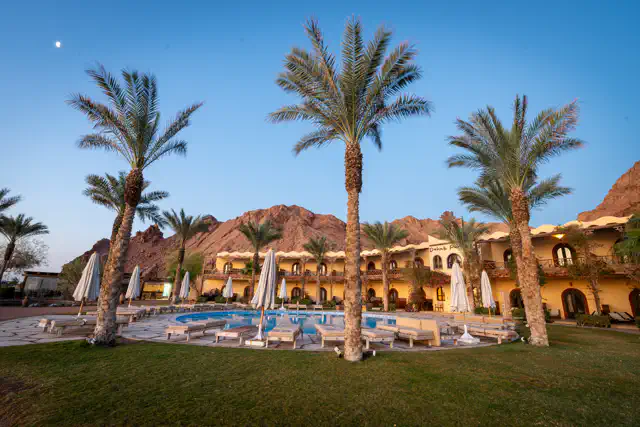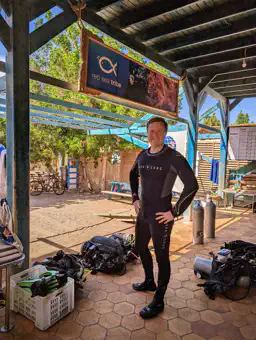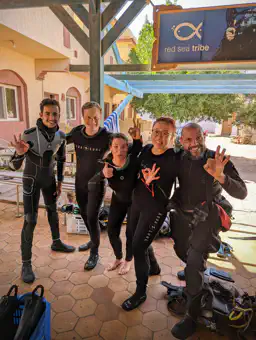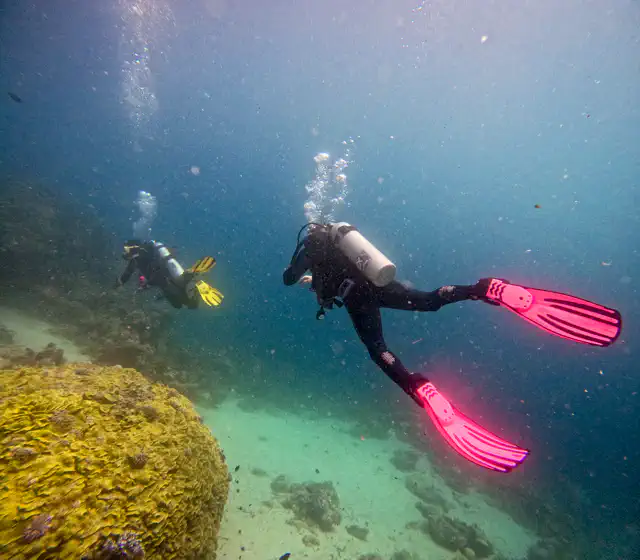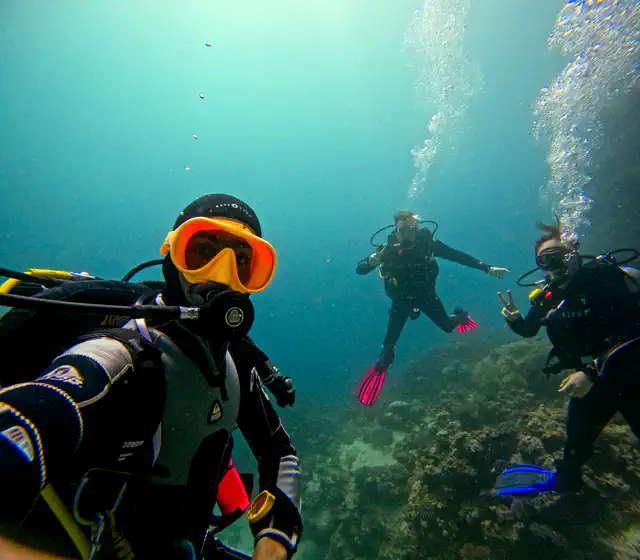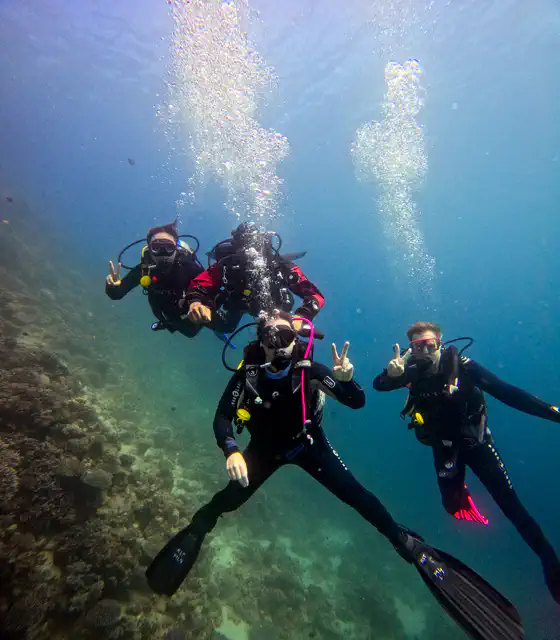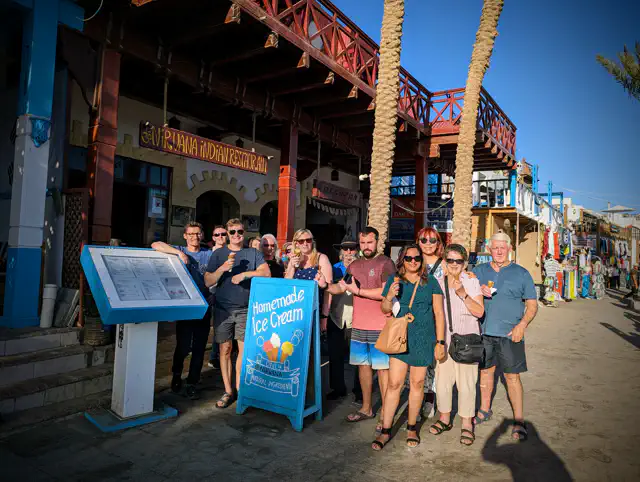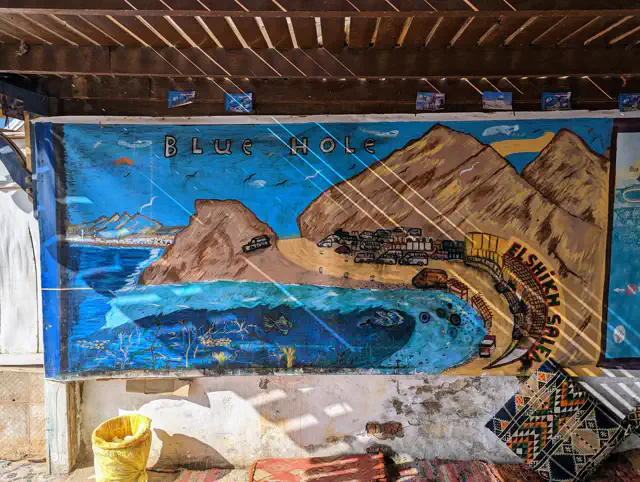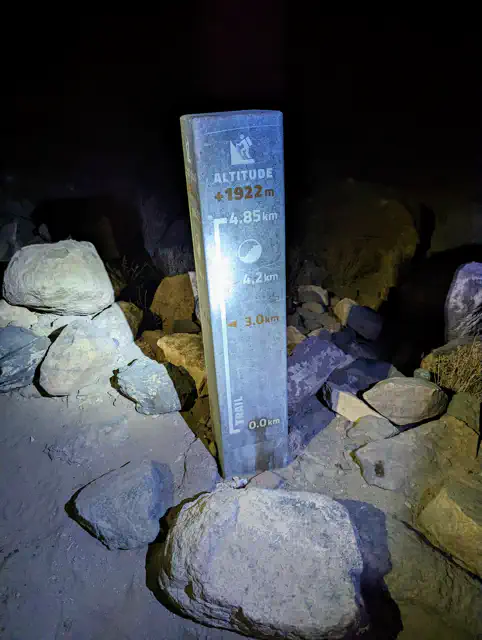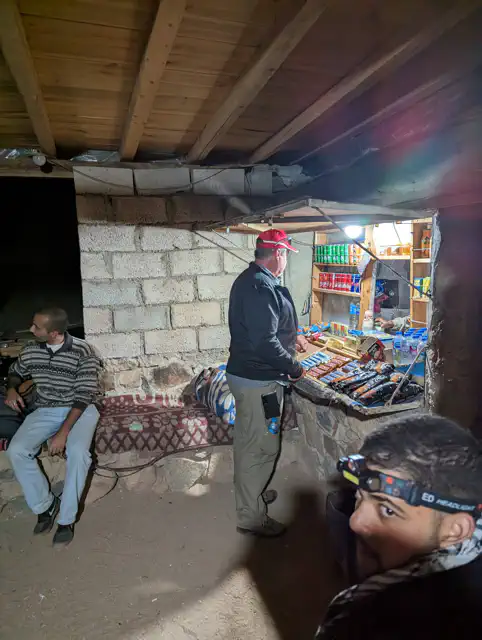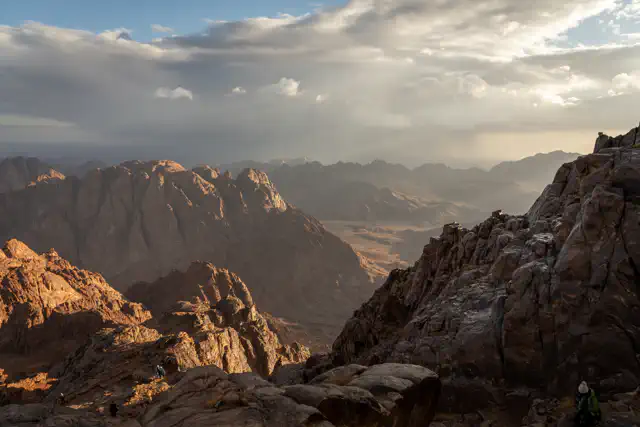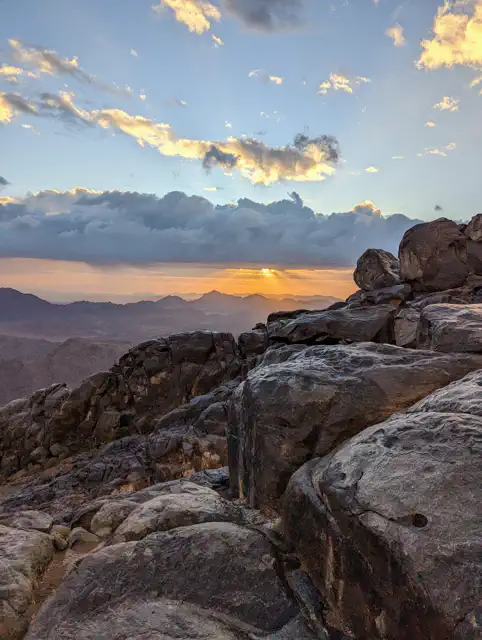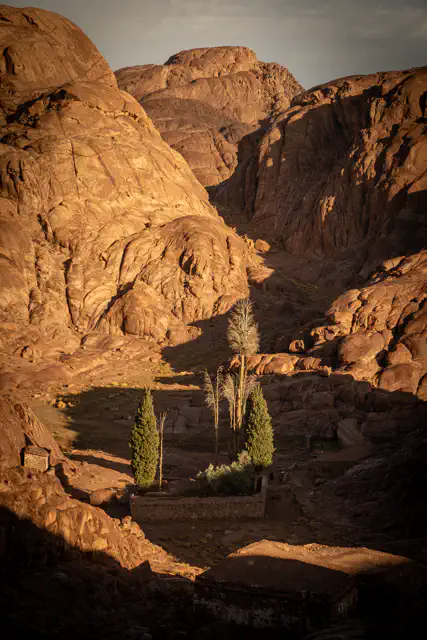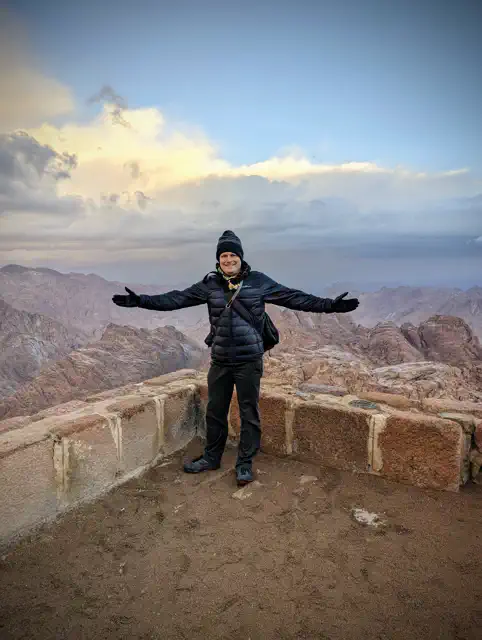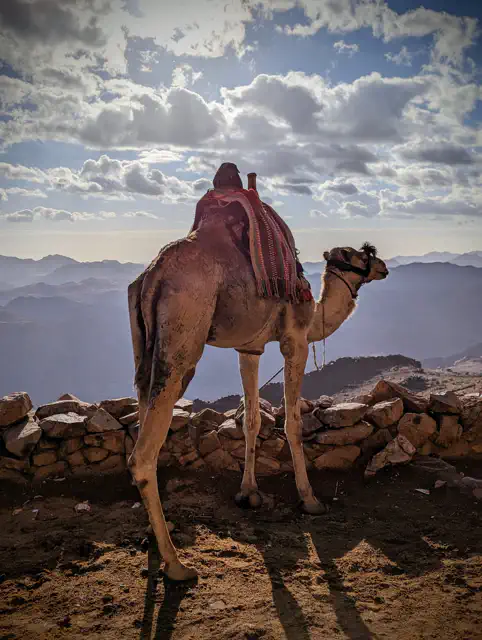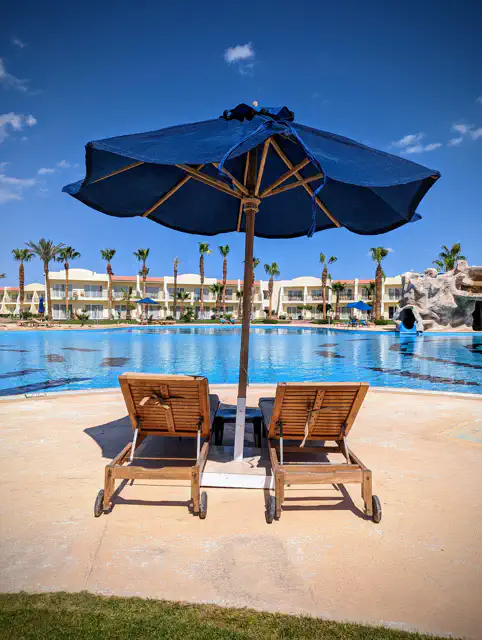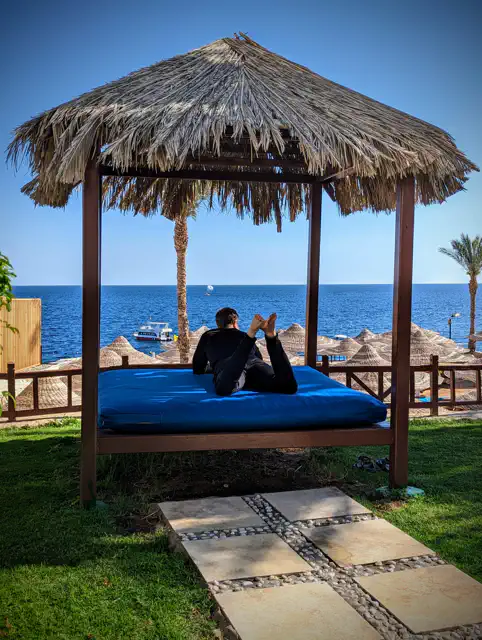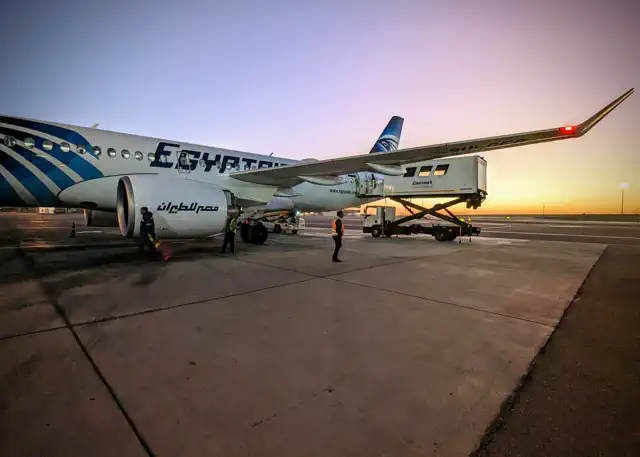This is Part 2 of our Jodan/Egypt trip. You can read Part 1 here.
Egypt - The Land of Ra
I’ve been enamored with Egypt for a long time. The long-running TV show Stargate SG-1 helped establish my interest, but I’ve always been fascinated by how ancient civilizations like the Egyptians, Incans, and Khmer were able to construct massive, perfectly engineered structures long before the tools and techniques of modern-day engineering. Even more impressive is that they remain standing to this day! After experiencing Angkor Wat in Cambodia and Machu Picchu in Peru, the OG Giza Pyramid Complex seemed essential to visit. While it’s easy to get lost in ancient dates, both Angkor Wat and Machu Picchu were built in the Common Era—The Pyramids at Giza were constructed three to four millenia prior! Their deep understanding of mathematics and precision engineering is astonishing, and Egypt contains so much history and lore; did you know that the Pyramids were designed to be resurrection machines for Egyptian kings? Even though we spent twice as much time in Egypt as Jordan, I feel we barely scratched the surface!
Temple Layouts and Rituals
Egypt has many temples, but they all share a standardized layout: imposing pylons at the entrance, leading to a vast courtyard used for rituals and a hall with a roof supported by pillars known as a hypostyle hall. Deeper in the temple lies the sanctuary known as the holy of holies. It housed the cult statue of the deity being worshipped. It’s past tense because these solid gold statues were all looted long ago. Access to this innermost chamber was restricted to high-ranking priests and the Pharoah. Each morning the high priest would shave off all the hair on his face and body to avoid lice, bathe in the temple’s sacred lake, and dress in clean white linens so he was “pure” while in the presence of the god. He would then enter the inner sanctum and care for the statue as if it were alive: he would clean it, anoint it with sacred oil, burn incense, dress it up in clean ceremonial clothing, and then leave an offering of food and drink.
Cairo
We were met at the airport by our new guide and several additional group members. Egypt is a more popular destination than Jordan, so our group was about three times larger. We were transported to the hotel and had time to relax before the evening’s group orientation and optional $30 USD dinner cruise. Since this was my only free evening in Cairo, I had my brother attend the meeting while I took an Uber to the Pyramids hoping for an incredible sunset. Most folks assume the Pyramids are out in the desert because they’re usually photographed facing away from the city, but they are right next to the city and can be seen from many parts of Cairo. It turned out to be a rather mediocre sunset, but since it was the only one I have, it’s my favorite! 😂 Plus, a good photograph is a function of one’s subject plus a background. When one’s foreground happens to be the only one of the original Seven Wonders of the World still in existence, it’s okay if the background is a bit underwhelming.
The next morning, we headed out to Saqqara home of the first pyramid: the stepped Pyramid of Djoser. It was built during Egypt’s Third Dynasty, so sometime between 2686-2613 BCE. Today it serves as a necropolis with tombs scattered throughout. As we entered the complex, our guide mentioned archaeologists had recently discovered a new section that was being excavated with wheelbarrows.
The tombs’ hieroglyphs were well-preserved and quite colorful. I hope you enjoy seeing hieroglyphs because I took many pictures of them during this trip. To get inside some of the tombs required one to crouch low and waddle down into the dark. Egypt is not a great place for claustrophobics!
We then headed to the Giza Pyramids which was the first time I got to see them in the daylight. They did not disappoint!
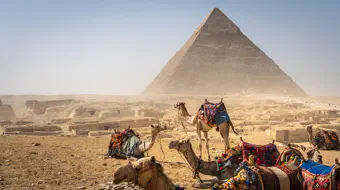
Constructed towards the end of Egypt’s Fourth Dynasty (2575-2465 BCE), the Great Pyramid of Giza was commissioned by Pharaoh Khufu. It stands as the largest among the trio of primary pyramids and is one of the most colossal architectural feats of architecture ever. Originally towering 481 feet, the relentless forces of erosion and “repurposing” of construction materials reduced its stature to 449 feet, roughly equivalent to a modern-day 45-story building. Once resplendent sheathed entirely with polished white limestone and crowned with a gleaming gold and silver capstone that would have shone for miles, today it has only remnants of its former grandeur. Adjacent to his father’s monument, Pharaoh Khafre’s pyramid, though originally 10’ shorter, presents a deceptive illusion of being taller because he built it on elevated bedrock. This elegantly mischievous bit of cunning is clever because it perceptually eclipses his father’s edifice while allowing plausible deniability to argue that he was merely showing his deference and respect by building a shorter pyramid. 😏 It’s easy to distinguish Khafre’s pyramid because it still has some of its original limestone casing clinging to the top, albeit weathered and no longer radiantly white.
You can “take a walk” around the Khafre Pyramid with Google Maps 3D Path below, or check out a rendering of what the Giza complex looked like when originally constructed.
Most of our group sprung for the optional tour inside The Great Pyramid. You enter through a robbers’ tunnel, which is aptly named because it is believed to have been created by a grave robber trying to break into the pyramid to loot the treasure. It culminates at the King’s Chamber where Khufu was laid to rest in the chamber’s highest recesses. Constructed from meticulously cut granite blocks with impeccably carved surfaces, it’s rock refined for royalty. The chamber’s sole occupant, besides the modern lighting and air conditioning units incongruously spaced amidst ancient stone, is the king’s sarcophagus. Hewn from a single granite block too large to navigate the narrow passages, it would have had to have been placed there before the room was complete and then they constructed the walls around it! There are narrow shafts that radiate up and out of the burial chamber which some have erroneously dubbed air shafts. Instead, they showcase the Egyptians as accomplished astronomers since they ingeniously point towards two circumpolar stars that rotate around the celestial north pole. Because these particular stars remained permanently visible in the night sky, they served as a metaphor for the king’s eternal destiny in the afterlife and served as an important piece of his resurrection machine. Navigating the interior passages makes for a tight fit especially when other people need to exit the same way. As they brush past, their arms inevitably touch yours, and the dampness of their sweat indicates the temperature will continue to increase as you progress deeper inside. There’s an Arabic proverb that seems like the perfect summary:
Man fears time, but time fears the pyramids.
If you’d like to take this tour virtually, a Harvard Professor spent several years creating high-end 3D tours. It’s quite impressive, and he provides annotations to explain everything you see. Note: You have to create an account to gain access, but I think it’s worth it!
We spent the rest of our free time walking around the perfectly shaped 230.6 meter-sided square base of the pyramid so about 922 meters. We then met up with our group to explore The Sphinx. The face is thought to represent Khafre and was cut from the bedrock. It’s the oldest known monumental sculpture in Egypt and symbolized Khafra’s unification with the sun god. You can take another virtual tour which will give you a sense of how massive it is.
Afterward, we had a late lunch before heading to the train station to catch our overnight sleeper train. I’ve been on overnight trains before, and Egypt’s version is quite the experience. Ours had caked on sand everywhere which might be expected in a country that’s 96% desert. We were told it was important not to use the bathrooms while the train was in a station because when you activated the foot pedal flushing mechanism, a small hole opened at the bottom and everything was dumped directly on the tracks. 🚂💩 The train follows the Nile, but I’m sure raw human sewage never causes water quality issues. 🙃 Maybe it’s my 1st-World privilege, or I’m just getting older, but I’ll opt for a flight vs. a train if I visit again. The sheets were clean, and we did get a relatively nice meal before the steward converted our cabin into two beds. We also had running water in our little sink which was nice for brushing our teeth.
There are a few additional activities/pictures we did upon our return to Cairo, but I’m including them here out of sequence in instead of having two Cairo sections.
- We explored the Egyptian Museum of Cairo which has over 120,000 ancient relics and antiquities. There were lots of crates and partially disassembled exhibits because many things were slated to move to the not-yet-opened Grand Egyptian Museum. I didn’t take many pictures here because everything was behind glass, and I’m sure they’ve been professionally photographed before. We unfortunately didn’t get much free time here; I could have easily spent either a half or whole day walking around and reading all the exhibits.
- We saw the Hanging Church.
- We explored the Mosque of Mohammed Ali which has gorgeous architecture and an impressive panorama view of the city.
- We ate lunch in the Khan el-Khalili souk and got free time to walk around and haggle over last-minute souvenirs. The traffic here was intense, but it was great to get a feel for the city.
Aswan: Gateway to the Temples of Philae and Abu Simbel
When we woke up, we had breakfast and learned we were an hour away from Aswan. After disembarkation, we boarded a bus to drop our luggage off at our hotel before driving to the docks for a boat transfer to the Philae Temple—The Jewel of the Nile. This temple was dedicated to the goddess Isis: she was both wife and brother to Osiris as well as mother to Horus (the falcon). While it was originally constructed on an island, the British completed the Aswan Low Dam in 1902 which threatened to submerge Philae. After experiencing devastating damage, especially to its bright interior colors, UNESCO started a rescue project in 1972 whereby they dismantled ≈ 20 temples, statues, and monuments into 40,000 units weighing between 2-25 tons each, moved, and finally reassembled them on higher ground 500 meters from their original location. This project ran for 8 years, involved 40 archaeological missions from around the world, and cost more than $30 million!
Despite it being moved, it’s in relatively great shape when compared to other Egyptian temples because of how late it was built in the history of Ancient Egypt (that definition of “late” is around 221 BCE). After the Romans conquered Egypt in 30 BC, Christianisation slowly began as Egyptians started switching from polytheistic to monotheistic worship. Participation in pagan rites was outlawed in 363 CE and Christianity became the official religion of the Roman Empire in 380 CE. But Philae was far south, so it was one of the last pagan temples to close in 537 CE. Christians took over the Temple of Isis and turned it into a church and then proceeded to scratch the faces off of the old gods. Here’s a more in-depth account of the end of the ancient Egyptian religion.
We swung by the unfinished obelisk for a speed run through the site. It’s the largest known ancient obelisk and would have been 137’ tall and weighed 1,200 tons if finished. Unfortunately, the stone masons abandoned the project when cracks began to develop in the granite. We then checked into our hotel before meeting at the docks a bit before sunset to take a boat across the river to a Nubian village for a traditional dinner. We got a tour of the colorful local school as well as a Nubian language lesson from one of the teachers. Upon arriving back at our hotel we discovered some big premier happening there; the lights and music were intense.
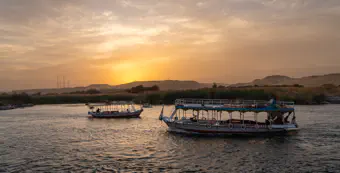
Abu Simbel Temples
We only got a few hours of sleep that night because the next morning we were on the bus at 4 am for our 3-hour drive to Abu Simbel which lies at near the southern border of Egypt ≈ 23 miles from Sudan. All of the other tourists had the same idea, so the site was packed. Similar to the Philae complex, Abu Simbel was threatened with flooding when the Aswan High Dam was being constructed in the 1960s. Over four years, the site was cut into ≈ 20-ton blocks and moved 65 meters higher and 200 meters back from the river. It involved 3,000 workers and cost $42 million.
The Great Temple of King Ramesses II has four 20-meter-tall statues of the king. The walls inside depict his military campaigns, so notice a lot of violence in the hieroglyphs. The temple was built so that on the 22nd of February and October, the sun’s rays illuminate the faces of Ramses II and the two gods seated next to him along the back wall of the temple. Rumor has it these dates correspond with his birth and the coronation. If I went again, I’d spend the night to catch the Sound & Light show.
We made our way back to the docks of Aswan to board our Felucca: a traditional wooden sailboat that would become our home for two nights as we sailed our way down the Nile. For many, this is one of the highlights of the trip. For me, it was my least favorite part, and I would opt to spend a bit more to go on a modern boat down the Nile. The staff was great, and the meals were good…I’m just used to a few more creature comforts these days. There was no bathroom on the boat, but we did have another motorized boat that tagged along behind us that had a bathroom large upper deck for meals with the group. We visited another Nubian village along the way.
Kom Ombo Temple
The abundance of temples in Egypt rivals the profusion of Wats in Thailand; their sheer numbers sometimes appear to coalesce. Kom Ombo stood out to me because it was dedicated to the crocodile god Sobek which meant that it had mummified crocodiles! Because Nile crocodiles were believed to be manifestations of Sobek, they were both feared and revered. When the priests recognized a crocodile as Sobek, they would worship and care for it for the rest of its life—talk about a dangerous job! 🐊🥩💀⚰️🌹 When it died, they mummified it and a new reptile would be “adopted”. Although he originally just protected his worshippers from crocodiles, he later became known as the “Lord of the Waters” from which farmland fertility sprang which was a big deal; some worshippers even believed the Nile was created from his sweat. While crocodiles used to be present throughout the Nile, they’re now only found south of the Aswan Dam.
The other unique thing about Kom Ombo is that it’s a dual temple: while the south side was devoted to Sobek, the North side was inhabited by the cult of Horus who may have been Sobek’s brother…or cousin? Egyptian family lines were complicated! Heath and I decided to embrace this godly, brotherly rivalry by each identifying with one of the gods. I smartly chose the crocodile since “everyone” knows that a falcon stands no chance against a crocodile as it would be easily devoured. If you’re a student of Egyptian history, though, you probably know that Horus was the traditional patron of kingship, so in retrospect, Heath was probably correct. The Kom Ombo temple has two entrances, two courts, two colonnades, two Hypostyle halls, and two sanctuaries, so it’s perfectly symmetrical along its main axis.
Temple of Horus at Edfu
Even though I think a crocodile god is cooler than a Falcon god, it appears the ancient Egyptians disagreed: Horus got his own temple dedicated just to him. The Temple of Edfu is one of the best preserved in Egypt because it was covered by desert sand up until about 200 years ago. It even has a rare intact roof.
You probably know of The famous Ark of the Covenant that the Bible says the Israelites carried during their Exodus from Egypt. Your memory may even involve a certain fedora-wearing, tweed-loving, whip-cracking academic, who dives headfirst into ancient tombs while dodging boulders and bad guys but hates snakes. 🤠🪨🚫🐍 Either way, the Holy of Holies at Edfu contains a replica of the ark which the priests would occasionally use to take their god statue outside. It has a striking resemblance to the Ark of the Covenant, and because it was built following the Exodus, Horus’ Ark may have been based on the Bible’s description. However, earlier temples before the Exodus have more crude images of arks transporting other Egyptian gods, so some believe it is more likely the Israelites copied the Egyptians instead.
Once we finished our free time roaming the grounds, we continued to the magnificent city of Luxor.
Luxor —The Modern City built around the ruins of the ancient city of Thebes
I could have used a few more days in Luxor and fewer days sailing down the Nile on the Felucca. We stayed at the 5-star hotel the Steignenberger which had the best breakfast buffet of our trip, and there were so many cool things to see and do here. If I go back to Egypt, I’d spend a good chunk of time in Luxor. It became the capital of Egypt during the twelfth dynasty (1991 BCE) and remained that way through the Middle Kingdom and New Kingdom eras. Toby Wilkinson of The Rise and Fall of Ancient Egypt summarizes it well:
The Valley of the Kings, Luxor Temple, The Colossi of Memnon, and the gold mask of Tutankhamun—the dazzling cultural achievements of ancient Thebes conjure up a lost world of breathtaking opulence and artistic patronage on a lavish scale. Created in the space of eight generations, these towering monuments and dazzling treasures are the legacy of a single royal line, the Eighteenth Dynasty, that ruled over the Nile Valley for two centuries. Its period in power represents the high-water mark of pharaonic civilization when Egypt’s confidence and sense of its own destiny seemed to know no bounds.
After watching the sunset over the Nile from our hotel’s pool deck, we went to the Luxor Temple for our first nighttime temple experience. Photographing during blue hour is one of the secrets of good photography because the dynamic range is narrower which allows for pictures without blown-out highlights or completely black shadows. Plus, the structures illuminated by warm, soft lights enhance the experience! This temple was built around 1400 BCE and is unique because it wasn’t a burial place nor was it dedicated to a specific god. Instead, it was representative of kingship.
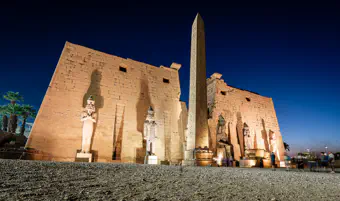
The temple complex has a very unique mix of religious buildings: it started as an Egyptian temple, but during the Christian era, the temple’s hypostyle hall was converted into a Christian church. The temple was buried for thousands of years, so the mosque of Sufi Shaykh Yusuf Abu al-Hajjaj was built over it. When the temple was uncovered, the mosque was preserved. There’s a place you can stand and view all three at once!
Out front is the impressive Avenue of Sphinxes: a path lined on either side by 1,057 large statues of sphinxes, rams, and lion bodies with ram heads. It once ran between the Luxor and Karnak temples, a distance of 1.7 miles, and it would have held feasts, coronations, and other celebrations. Originally known as the “Path of God”, the primary purpose was their annual Opet Festival where they would parade the statues of gods down the road during the flooding season of the Nile in a festival that lasted ≈ 27 days!
Hot Air Ballooning Over Luxor and the Nile River Valley
The next morning was another early, pre-dawn wakeup call where we piled into minivans, were driven down to the docks, crossed the Nile, and were driven to the launch site where the numerous balloons were in varying stages of getting blown up. We were assigned our baskets and climbed aboard for our 40-minute ride as the sun rose.

I’ve ridden in a hot air balloon in Laos, but this basket was much larger. The whole trip folks are jostling around for the best views. My favorite scenes involve pictures of other balloons as they’re floating over something interesting. We did float over some ruins, but we didn’t have our Egyptologist with us to educate us on what they might be, so we focused on taking it all in and enjoying the experience. I did take a very brief break to get a quick obligatory pic with my brother. But then I quickly returned to snapping photos as we bobbed in the air.
We reversed our early morning travel to return to the hotel just in time for the best breakfast buffet of the trip. Our feast was fit for a king was apropos because we were off to our next destination—The Valley of the Kings.
The Valley of the Kings aka The City of the Dead
Previous dynasties had built massive pyramids that effectively had neon signs blinking “Attention Grave Robbers: Vast treasures lie inside. Please come steal the king’s opulent wealth.” After having their eternal tombs decimated by grave robbers and/or the expensive construction materials stripped by later kings to use in their own monuments, the Eighteenth Dynasty kings decided that they would instead hide their tombs so nobody would disturb them on their journey to eternity. Archaeologists uncovered the tomb of Tutankhamun in 1922, but there’s likely more to be found.
Our entry tickets included 3 “regular” tombs, and we purchased an extra ticket for the last one. Our guide highlighted a few tombs as being better than the others; we followed his recommendations and were very pleased.
- KV 34 - Thutmosis III
- KV 2 - Ramesses IV
- KV 16 Rameses I
- KV 62 - Tutankhamun
Most of the other sites we had visited had beautiful hieroglyphs, but most if not all of the color was gone. They were still impressive, but when walking into these tombs, the vibrant colors put them to shame, so it makes sense we worked our way up to these; if we had gone the other direction, others wouldn’t have seemed as impressive in comparison. There was also some surprising imagery: take a close look at the first 2 images especially focusing on the Pharoah at the center.
We also visited King Tut’s tomb which was heavily guarded and regulated including sensors to detect environmental changes. When first discovered, it was cited as the greatest archeological find of all time and contained over 5000 artifacts. All of those were moved to Cairo except for three—the outermost of his three nested coffins, the stone sarcophagus covered with its lid, the mummy of the king which is covered for his modesty, so only his creepy mummified toes and face remain visible.
The Karnak Temple Complex
After grabbing lunch, we toured a sculpture boutique where many picked up souvenirs before heading to the Colossi of Memnon which are two massive stone statues of Pharaoh Amenhotep III where Heath and I grabbed a picture with our tour guides. Then we went back downtown to the temple at the far end of the Avenue of the Sphinxes: Karnak. It was impressive but also at the end of an already jam-packed day gushing with incredible history, so I probably didn’t give it as much attention as I should have. Noteworthy features included a stunning hypostyle hall and soaring obelisks throughout the compound.
We then headed down to the train station to catch our sleeper carriage back to Cairo where we did a few last-minute activities previously mentioned in the Cairo section before resting in our hotel. For most of our group, the tour was over, but Heath and I had added the optional 3-day extension down to the tip of the Sinai Peninsula. There was an included 6-hour overland via a mini-van journey that left at 2:30 in the morning. We opted for the cheap flight that left at a reasonable time the next morning.
Dahab - The Sinai Peninusla
After a week of intense, grueling days on our whirlwind tour of Egypt, we were moving from the African portion of Egypt to the part in the Asian continent for a much more leisurely pace—a vacation from our vacation if you will.
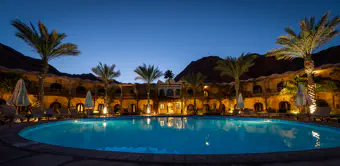
Dahab is 15 minutes from the world-famous Red Sea Blue Hole which is a submarine sinkhole that’s visible from space; it has a maximum depth of just over 100 m (328 feet) and is ominously known as the Divers’ Cemetary becuase it has some of the highest diver fatalities in the world. I am a PADI-certified Advanced Open Water Diver with a Nitrox certification, so I intelligently opted to snorkel the Blue Hole instead of adding to the list of deaths. The first 10 meters underwater is usually the most active and is always more colorful than deeper depths, and our snorkel session was beautiful.
Our new guide for this portion of the trip was an active freediver with a penchant for reaching the bottom of the blue hole on a single breath. This seems insane to me. Impressive but insane. It reminds me of this morbidly funny video from the Australian-based Metro Trains trying to promote railway safety entitled “Dumb Ways to Die”. 🤡💀🪦🦈 We even had to walk past a cliffside that was carved with many tombstones of divers who died there to enter the water to snorkel.
I did take advantage of the nearby Red Sea Tribe Dive Center to book a quick mandatory refresher course and then just a regular fun dive for the next day in much safer, shallower water. We then explored the shops downtown, got some homemade ice cream, and enjoyed a relaxing day by the pool and ocean reading.
The next day, I did my dive and then tried to nap before my evening expedition to Mt. Sinai. Heath wasn’t feeling well, so he opted to skip it. In retrospect, I almost wish I had skipped it (look at me foreshadowing). Everyone else in our group had to skip it because they needed to leave early the next morning to catch the ferry across the Red Sea to do the second part of their tour in Jordan. Since we did Jordan first, we had the opportunity for the nighttime hike which was supposed to return mid-morning.
My hotel pickup was at 10 pm, followed by a three-hour drive to St. Catherine’s Monastery, a 1am meet-up at the trailhead in the dark, and then a nighttime ascent of what’s believed to be the biblical Mount Sinai where Moses received the Ten Commandments. It’s the second highest mountain in Egypt at 7500 ft, so the views are panoramic, and watching the sun crest over the lower mountains was a great experience. Not pictured and not such a great experience was the hail moments later followed by intermittent torrential downpours that left everyone soaking wet for hours. The van that brought me back did not have heat, so I remained drenched for the 3+ hour drive back; it took longer to get back because the infrequent rainstorm washed out several roads and stressed what seemed to be the Sinai Peninsula’s nonexistent stormwater management. At least the photos are pretty!
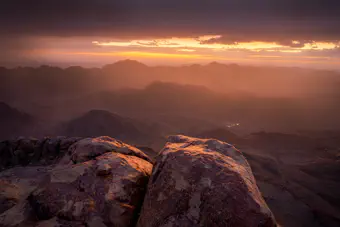
Sharm-El Sheikh - The End
Dahab was peaceful and remote, but the closest airport was an hour away in Sharm-El Sheikh. Because of connecting flight times in Cairo, we opted to spend our last day relaxing on the world’s northernmost tropical sea instead of in some dingy Cairo airport hotel. We went by private car, and I was surprised by the number of military guard stations there were. Our driver had to stop and present our passports and answer questions several times during the journey.
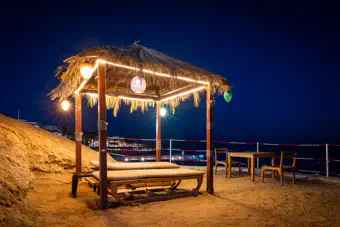
Summary and Lessons Learned
Our guide joked that our trip to Egypt would remain incomplete until we visited the British Museum to see the other half of the Egyptian artifacts and relics we had missed. 😂
There’s so much history contained in Egypt, and my trip there inspired me to learn more. I’ve been working my way through Toby Wilkinson’s tome The Rise and Fall of Ancient Egypt, and here are a few quotes that resonated; many still ring true today, and it’s interesting they began thousands of years ago.
- Representing power as piety was a favorite trick ancient Egyptian propagandists used.
- A glorious death was an adequate substitute for the joys of life [for non-royal ancient Egyptians].
- Successive waves of immigrants enriched and renewed Egyptian civilization.
- In an uncertain world, the promise of an afterlife for all offered a grain of comfort.
- The Egyptians were adept at recording things as they wished them to be seen, not as they actually were.
- The universal tendency for absolute power to project itself in grandiose architecture.
Here’s a link to our trip notes in case you’d like more details or to pull things from our itinerary. We went with Travel Talk Tours on their Ultimate Jordan & Egypt trip. While that exact itinerary is no longer offered, you may find something similar here.
